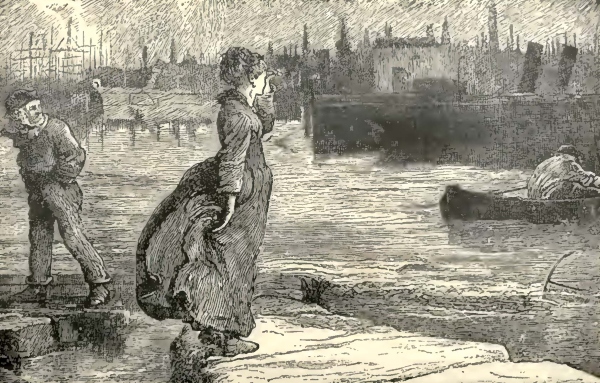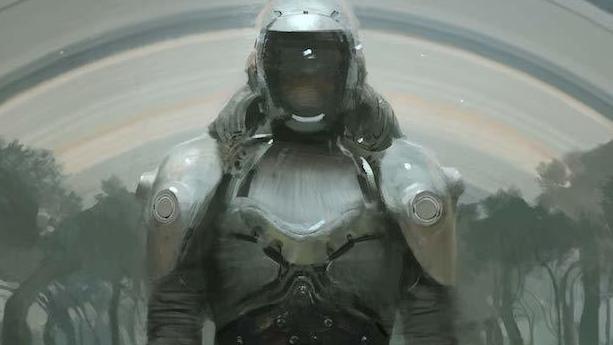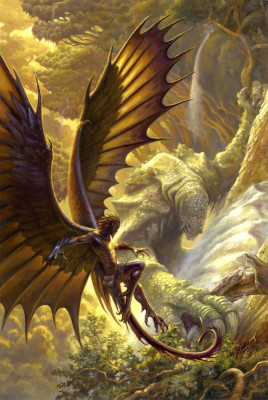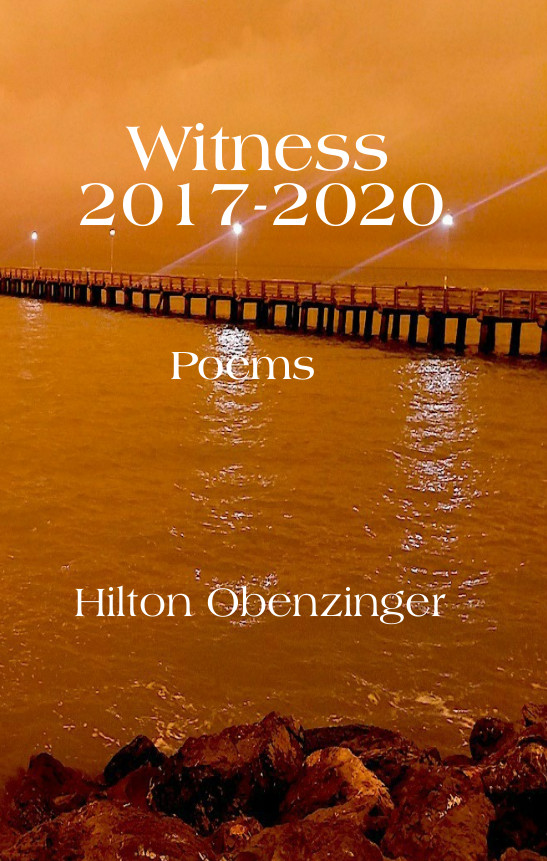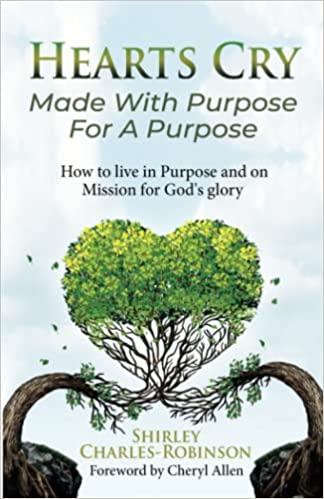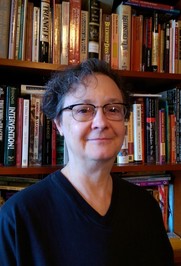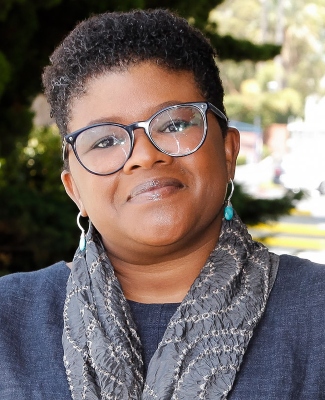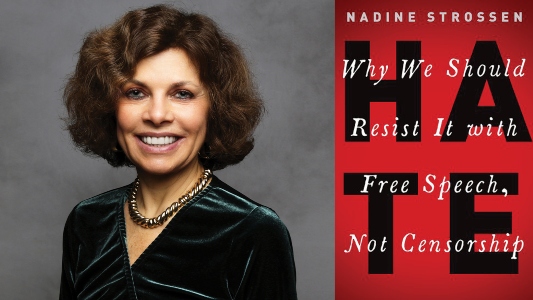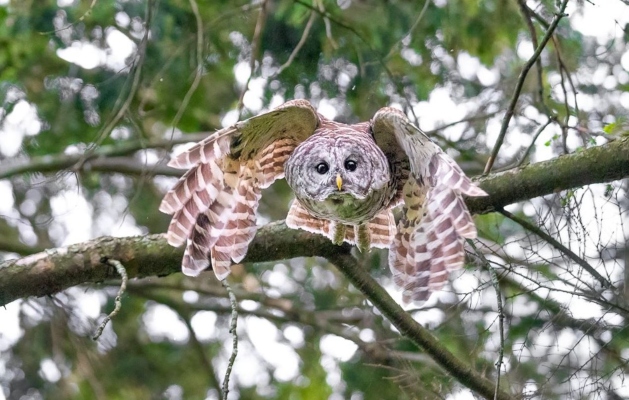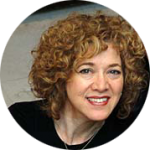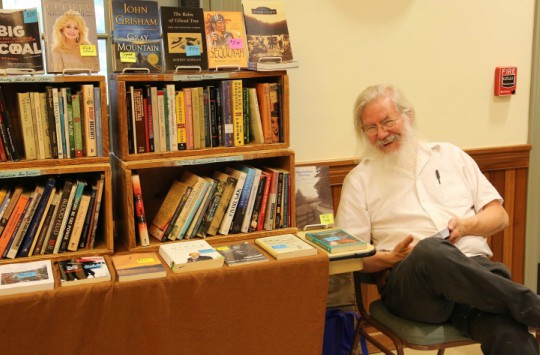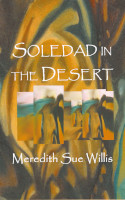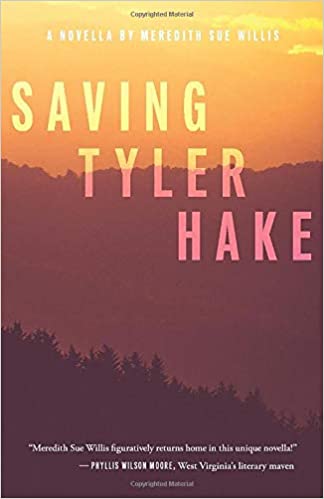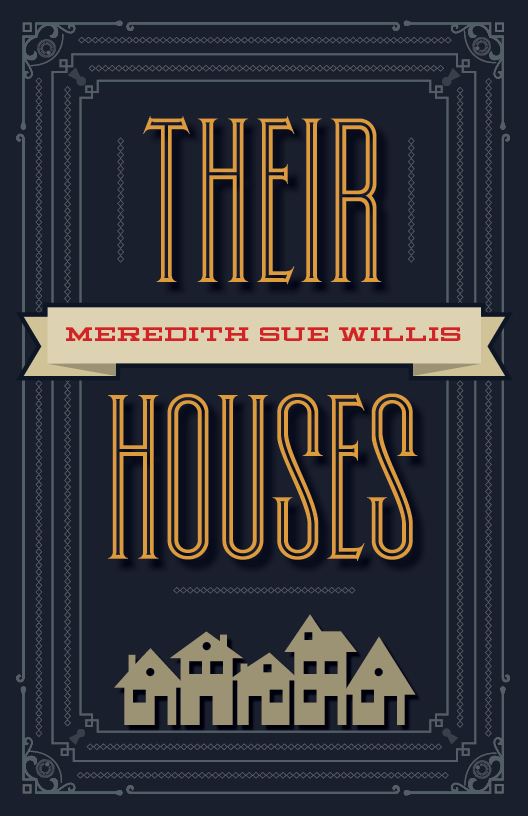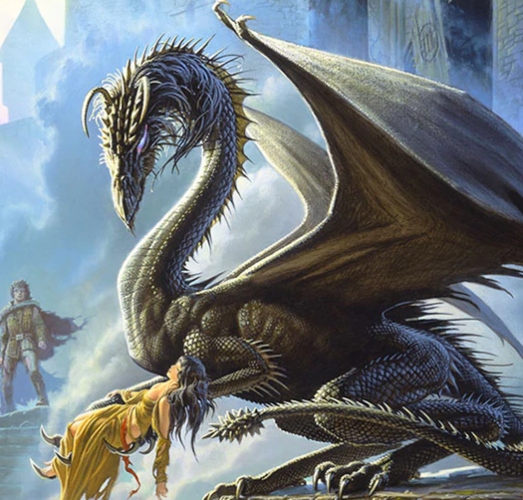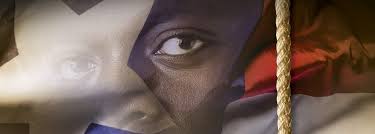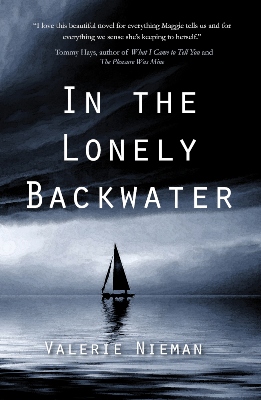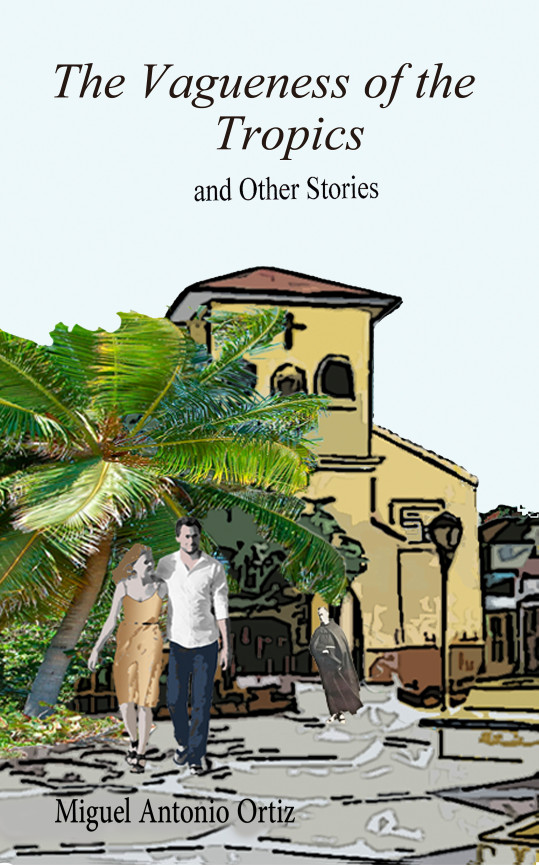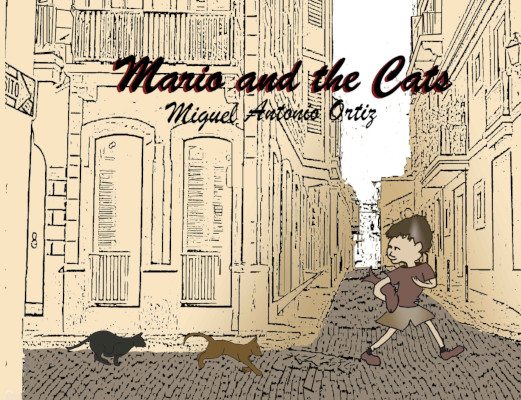Meredith Sue Willis's
Books for Readers # 219
January 23, 2022
This Newsletter Looks Best in its Permanent Location Online!
Back Issues MSW Home About Meredith Sue Willis Contact
This Newsletter Looks Best in its Permanent Location Online!
New story online by MSW: "Fan Fiction: Paradise Lost"
at the Maryland Literary Review
Scenes from The Mutual Friend; image from Murderbot series; Carolina DeRobertis; World War II Cruister; Kendra James
TABLE OF CONTENTS
Issue # 219
Reviews are alphabetical by author, not reviewer.
If not otherwise noted, reviews are by MSWGood Reading Online
Notices of New Books & AnnouncementsBook Reviews
Genre Selections
Department of Danny Williams
Book Recommendations and Reader Responses
Especially for Writers
Irene Weinberger Books
Book Reviews
The Overlook and Nine Dragons by Michael Connelly
The Gods of Tango by Carolina De Robertis
Our Mutual Friend by Charles Dickens
Time and Tide by Thomas Fleming
The Lives of Erich Fromm: Love’s Prophet by Lawrence J. Friedman Reviewed by Joe Chuman
Admissions by Kendra James
Out of Darkness by Ashley Hope Perez
The Color of Magic: Discworld by Terry Pratchett
An Act of Remembrance & Other Mostly True Historical West Virginia Stories by Randy Safford Reviewed by Danny Williams
All Systems Red, Artificial Condition, and
The Cloud Roads by Martha Wells
We are in a moment of setbacks on the socio-political fronts, a time of un-welcoming weather, and, of course, pandemic. I am thankful for dry days for walking, but we mostly stay in. I seem to be very busy with Zoom meetings for my political and literary groups, and I'm teaching online, but there is a staleness that settles around my shoulder from all the huddling indoors and the bad news. It helps me to remember we are all sailing in this leaky, funky old ship together.
Also that the days are getting longer.
For me, reading history gives a welcome perspective on now with information and stories about times that were far worse than these, and for some very fresh good news, look at some suggestions below for really good online readings and new publications mentioned in the announcements,
This issue also offers some materials and places to submit for writers, as well as the new Department of Danny Williams. Danny is an editor with lots of ideas about how to make your writing better--he was the editor for my 2002 novel Oradell at Sea.
And then, of course, there are the books, starting with Dickens (Our Mutual Friend) and including a brand-new just-published novel called Admissions about life in a New England prep school for a student of color,. and a novel I had missed by the ever-wonderful Carolina DeRobertis, The Gods of Tango. Plus a lot more--reviews by Joe Chuman and Danny Williams and a new-to-me fantasy/science fiction writer, Martha Wells.
REVIEWS
Our Mutual Friend by Charles Dickens
This was written in 1864–1865, and is the last novel Dickens completed. I loved it on so many levels– the language; the easily visualized funny and violent scenes; the unusually rounded characters for Dickens, people who change, although one apparent change turns out to be a plot trick.
Bella in particular is one of Dickens' best snobbish pretty girls. She stays nineteenth century femme, but also develops into an energetic and self-motivated adult woman, even if she gives lip service to being the angel in the house. She's the real protagonist far more than the mysterious "mutual friend" of the title and plot. Dickens's ideology continues to insist that the Ultimate Purpose of Woman is to love (husband and baby), but he seems to have learned at least something about women from his own love affairs and, perhaps especially, from having daughters.
Bella's first sign of a saving grace (aside from beauty, which is never undervalued by Dickens) is how she enjoys her rather silly and passive old dad. Fathers and daughters are an important theme in this novel. The four (or more) daughter-father pairs include Bella and old Pa; Jenny Wren and her Child; Pleasant Riderhood and Rogue Riderhood; and of course the highly romanticized Lizzie Hexam and her father Gaffer.
Bella's soul mate John, however, is a pretty stunted character with an appalling upbringing. He is unappealingly in how he tests Bella and everyone around him. He is a damaged man with too little experience of good human relations, sneaky and distrustful. Most of this, though, is not examined but turned into plot material. Direct exploration of souls was never Dickens' strong suit.
But who cares. If you don't like John, there are a few dozen other delightful characters to follow. One of my favorites is Bradley Headstone (yes, Headstone) the school master obsessed to madness with beautiful, illiterate Lizzie Hexam. What a magnificent self-torturer! Then there is Eugene Wrayburn, the languid bored gentleman who also loves Lizzie but can't imagine any approach to a woman of Lizzie's class except seduction. He is eventually saved by Lizzie Hexam's emotional and physical strength.
The Golden Dustman Noddy Boffin and Mrs. Boffin, wildly popular a hundred fifty years ago, are fun but not my favorites. My favorite is the equally over-the-top but somehow more believable Jenny Wren, the semi-crippled dolls' dressmaker. There's a good-hearted victimized old Jew Riah, said to have been inserted to balance out the evil Fagin from Oliver Twist.
I was struck by how cinematic this is--or perhaps I only mean easily visualized. There is one tiny scene in a pub where two men sitting side by side start simultaneously leaning, just a throwaway scene, but one that would be very funny on film. There are many moments that burn into your mind: the rising water in the locks on the river, the sudden appearance of Rogue Riderhood in the door of Bradley Headstone's classroom.
But mostly, as I think about the novel, I just smile with pleasure at the ever-articulate Dickens people.
More: Philip Hensher has an excellent 2011 review of the novel in the Guardian .https://www.theguardian.com/books/2011/sep/23/charles-dickens-favourite-mutual-friend Also take a look at this appreciation in Time by Radhika Jones: https://entertainment.time.com/2012/02/01/counting-down-dickens-greatest-novels-number-5-our-mutual-friend/
Admissions by Kendra James
Admissions begins light and humorous--told by a thirty-something woman with a full memory and enjoyment of the popular culture of her high school years. Her teen world was about instant messaging and Livejournal and role playing with people around the world. She writes Buffy fanfic and has a huge poster on her wall of Orlando Bloom as Legolas in Lord of the Rings.
She is also the first black legacy student at
the Connecticut prep school Taft where her father, a scholarship student, went in the nineteen-seventies. The first half of the book is mostly a flashback prep school story--a memoir with many names changed, but not the names of the institutions. But the frame of the story is the narrator out in the work world with a job recruiting students of color to independent schools.
We are told immediately that she has mixed feelings, and as she goes back in time to her experience, we learn why. Still, the first half is mostly funny. She has a moderately racist roommate, but she and her best friend Yara (Black, Lesbian, and a recruited athlete) get rid of the bad roommate. There are high jinks and discoveries--but the narrator becomes increasingly aware of the institutional racism toward her and her fellow students of color, many of whom are on scholarship or recruited for various skills. The narrator, however, is not on scholarship,and her parents are working hard to give her the so-called Taft Experience that is her legacy.
In the second half, she pays more and more attention to the way Taft thinks it welcomes Black students and other students of color, but in fact gives them no protection against a particular kind of wealthy kids' white privilege. There are some nice distinctions between what she knows now about white privilege and systemic racism and what she didn't know then--as a fifteen year old hanging on for dear life in a place where the talk was liberal and the walk was punitive for everyone who wasn't part of the elite.
And Legacy or no, the narrator realizes she is not part of the elite.
She gives credit to the teachers of all races who cared, and she includes a least one white student in the group that begins to meet after a clueless racist rant is published in the school newspaper.
Part of me wishes she had gone all the way mixing the fun and the seriousness in novelistic form, but James intends to have immediate impact on the current landscape. Her insights are crucial at this time of awareness of police murders and, especially, of how wealth has accumulated for the rich of one race (and how that wealth was accumulated) while even the affluent of the other race struggle with mortgages and second jobs.
It's a unique angle on what we are experiencing today, and a book that you can't stop reading.
Out of Darkness by Ashley Hope Perez
March 18, 1937. A natural gas leak caused an explosion that killed more than 295 students and teachers.
I read Phyllis Moore's review in this novel newsletter Issue #217, and wanted to read it for myself.
I'm so glad I did. It's a gripping story, and once you're gripped, you're wrenched around and gob smacked. Tough stuff: the historical event is a gas explosion at a public school in the East Texas gas fields where almost 300 people were killed. More savage in the story, though, is the twisted rattlesnake ball of racism and sexism and general brutality that is lived before and after the explosion.
It is written from the point of view of eighteen and nineteen year old protagonists plus seven year old twins. The twins' father, main character Naomi's step-father, is the villain, although Perez insists on giving him explanations if not excuses and occasional point of view sections. Naomi, who shares with Cari and Beto a Mexican American mother, is dark-skinned while the kids are pale. Naomi and the twins go to the local "white" school where the twins fit in easily, especially as they are brilliant and beloved of their teachers. They read encyclopedias when things get dull. But Naomi's is an anomaly at the school because of her brown skin. She is never really accepted as white, and the teenagers (who have some group point of view sections) debate her looks and her morality. The boys fantasize privately and together about having sex with her.
Naomi, meanwhile, falls in love with Wash, a young black man from "Egypt Town." Wash is from a striver family who want him to go to college. What ensues has lots of beauty and and lots of danger, mostly from the stepfather, and then, in the end, almost everything bad that could happen happens.
I wanted the people I liked to come out alive, and I sometimes felt that Perez's choices were arbitrary--that things could have gone any way at any point. I suppose Perez would say Yes, exactly that's how the world works, but I felt mildly manipulated a few times.
Mainly, though, I deeply admired the book..
The Lives of Erich Fromm: Love’s Prophet by Lawrence J. Friedman Reviewed by Joe Chuman
Vogue authors abounded on college campuses in the 1960s. Names such as Herman Hesse, Aldous Huxley, Alan Watts and Jack Kerouac were among those at the top of the list. For students poetically inclined there were Alan Ginsburg and Lawrence Ferlinghetti, among many others. But for me the premiere writer was the social psychologist, Erich Fromm. Fromm authored more than 20 books, and starting at the age of 16 when I entered college, I devoured them all. For a depressed and lonely teenager, Fromm’s humanistic psychology that valorized the “productive personality,” whose character is molded out of social experience and active engagement with life spoke to me in ways that were inspiring and life changing. Though I have moved beyond his thought, I am forced to admit that no writer has more profoundly influenced my life, both in terms of framing my world view and anchoring my values than has Erich Fromm.
Lawrence Friedman’s The Lives of Erich Fromm: Love’s Prophet, is a prodigious piece of scholarship. Friedman is a professor in Harvard’s Mind/Brain/Behavior Initiative and has written texts on such psychological
luminaries as Erik Erikson and Karl Menninger. The title of the current work recognizes Fromm’s multiple roles as psychoanalyst, social philosopher, political activist, prolific and phenomenally successful writer and social prophet.
Erich Fromm was born in Frankfurt in 1900 and issued from a long line of prominent rabbis. Himself an orthodox Jew, steeped in Talmud and Chasidic folklore and song until he was 26, Fromm began to universalize his world-view through exposure to the thought of Hermann Cohen the famed neo-Kantian philosopher. Fromm, who was attracted to older women, was seduced by his analyst, Frieda Reichmann, eleven years his senior. They married and subsequently divorced, but it was through Reichmann that Fromm gained an appreciation for Freud, whose thought remained central to his life’s work. In 1929, Fromm joined the Frankfurt School of Social Research, a group of eclectic and skeptical Marxist scholars, Theodore Adorno and Max Horkheimer, the most distinguished among them. It was at the Frankfort School that Fromm, developed what would become the centerpiece of his theoretical work for the remainder of his life. That work centered on an attempt to fuse Freudian psychoanalysis with Marx’s social critique of capitalism, particularly ways in which the capitalist mode of production distorts human character, and transforms human beings into mindless consumers and conformists, thus robbing them of their humanistic potentials.
In order to do this, Fromm abandoned orthodox Freudianism’s central focus on man’s biologically-based instincts for sex and aggression, and replaced them with what he referred to as “social character.” In short, one’s psychological orientation and personality are molded by interpersonal relations. This created the opportunity for the development of different personality types such the “authoritarian,” “dependent,” “sadomasochistic,” “productive” pwersonalites, as well as others.
His revision of Marx was no less controversial. Rather than elaborating on the mature Marx of Capital, with its focus on economic determinism and mainstays of the communist movement such as the dictatorship of the proletariat and the historically mandated role of the working class, Fromm revived and expounded on the Economic and Philosophical Manuscripts of 1844. Here he transforms Marx into a proto-psychologist who elaborated on the alienation of man from his labor, himself and his fellow men. The Manuscripts of 1844 points to a humanistic and socialist utopia, which reinforced Fromm’s own Messianic values gleaned from the Jewish tradition.
In 1941, Fromm published his most important volume, Escape from Freedom, which attempted to analyze the compelling power of Nazism and its appeal to the German populace, though Fromm’s social psychology could be applied as well to strains of conformism salient in American capitalism. Fromm’s central thesis is that freedom generates anxiety.
Freedom, though it has brought him independence and rationality, has made him isolated and thereby, anxious and powerless. This isolation is unbearable and the alternatives he is confronted with are either to escape from the burden of his freedom into new dependencies and submission, or to advance to the full realization of positive freedom which is based upon the uniqueness and individuality of man.
This brief passage exemplifies the binary nature characteristic of Fromm’s thought; man either lapses into authoritarian obedience or moves ahead to claim his maturity, productivity and happiness. For Fromm, the latter is achieved through the positive unfolding of our potentialities, our human capacities for love, reason and productive work most of all. It is this unfolding, and the society it prefigures that comprises the acme of Fromm’s vision, which he refers to as “humanistic socialism.”
Before a falling out with Adorno, Fromm relocated the Frankfurt Institute to Columbia University in 1934, where he secured a teaching position, and then later at Bennington College and Michigan State. All the while, he engaged his work as a practicing analyst, helped to found the William Allison While Institute, had an affair with Koren Horney, even as he analyzed her daughter, and developed working friendships with Arthur Schlesinger, Margaret Mead, and David Reisman, among other intellectuals. And he continued his writing that enabled him to establish an international reputation. In 1955 he published The Sane Society, which picked up themes introduced in Escape from Freedom, as it used the norm of the productive personality to critique capitalist conformity, consumerism and the erosion of democracy. The next year, Fromm came out with The Art of Loving, which sold in excess of 25 million copies, more in Germany than any volume other than the Bible.
Later in life, Fromm fearful of nuclear annihilation became an activist in the service of disarmament and international peace. His reputation enabled him to develop extensive correspondences with Adlai Stevenson, and later Eugene McCarthy, among others. And Friedman contends that Fromm influenced John Kennedy to develop a negotiating posture towards Khrushchev rather than ramp up what he saw as inevitable bellicosity leading to nuclear war.
Friedman’s treatment of Fromm is meticulously researched and balanced. His critique of Fromm confirms conclusions that I had drawn even in my admiring youth. Among them is that despite Fromm’s creativity, his influence rested greatly on the clarity and power of his prose, and much less so in the rigor of his scholarship. One is often left with the sense that authorities invoked by Fromm, whether they be Aristotle, Spinoza, Freud or Marx, are felicitously shaped to fit the Frommian mold. Despite, the remonstrations of serious academics, Luther is portrayed as the prototype of the authoritarian, Spinoza, the champion of humanistic psychology, and Marx the paragon of the happy and productive character type. This hagiography contradicts a virtual consensus that Marx, though a genius, was a miserable human being, plagued by poverty and boils, given to drunken brawls in his youth, and with two daughters, whom he undoubtedly loved, but who ended up committing suicide.
Another flaw in Fromm, unasserted by Friedman is Fromm’s implicit but unflagging moralism. In heralding the productive human being, as the ideal type, Fromm failed to acknowledge humanity in its fallen state, so to speak. One leaves Fromm beguiled by his humanistic vision, but deflated that one cannot reach the bar he has set impossibly high.
Friedman has produced the most detailed, comprehensive, balanced and readable biography of one of the twentieth century’s most influential thinkers. Yet his study would be more satisfying if he had clarified what it all adds up to. Oddly missing is Fromm’s place as a harbinger of the Humanistic Psychology Movement with figures such as Carl Rogers, Abraham Maslow, Albert Ellis and others who helped to shape the geist of the 1960s. But the author is to be commended not only for his rigor, but for a putting before us the life of thinker who so powerfully influenced his own time, if not, unfortunately, our own.
Time and Tide by Thomas Fleming
This novel of the Second World War in the South Pacific makes a fictional cruiser called the the Jefferson City the locus of most of the most important events of the war. There is a terrible scandal when the captain leaves a major battle, for which he is relieved of duty. Kamikazes disable the ship. The ship is chosen to carry the atomic bombs to their rendezvous with the planes that will drop them on Japan. Shortly after that is the grand finale of abandoning ship and floating with sharks and oil and not enough lifeboats for the hundreds of guys still alive.
Fleming writes the action and historical background very well. I learned a lot, never to be sneezed at. Fleming was an historian as well as a novelist. and this book does all the shipboard life and various levels of sailor's experiences very well. One other thing he does well is occasional chapters allied "Mail Call '' made up of fictional letters from characters back home. So I'm glad I read the book, but I frankly disliked about a third to a half of it. I was fascinated by the parts about keeping the boilers from exploding about decisions on the bridge, about the closed off claustrophobic spaces below decks, and how good captain maneuvers his cruiser.
But, oh dear, the events on shore! The main character is Art McKay, the replacement captain of the Jefferson City who is very good at maneuvering cruisers. But he is also in an unhappy marriage and searching with much angst for what really happened to his best friend, the previous captain of the Jefferson City. I wish he had skipped the women altogether. The navy wives love the navy more than they love their husbands. The various young women in ports of call just want to have sex with sailors. Everyone who has an inner life at all, male or female, has it revealed in wildly melodramatic if not operatic passages of narration.
I understand Fleming's ambition to write a really big epic novel of men at war. He wants to lift up the sacrifices of the sailors and officers, and to throw a bone to the ladies. I just wish he'd given up epic and written what he was good at. A much better Big American War Novel (albeit not about the war in the South Pacific) is one I reviewed in this newsletter a few years back, Irwin Shaw's The Young Lions.
If Time and Tide had stuck to what it does extremely well, it would have been a much slimmer, tighter, and less melodramatic book.
The Gods of Tango by Carolina De Robertis
This is mostly recommendation: an awfully good book. It goes from a village in Italy to Buenos Aires; from anarchist rebellions to the development of tango; from a girl who loves women and thinks there is no one else in the world like her to a permanent life as a cross dresser.
There are wonderful scenes of poor people in communal living situatioins and lots of suffering, especially by poor women in early 20th century Argentina and Uruguay. I also liked the rich scenes of several subcultures: music of course but also crime and the world of brothels.
Some of the story is predictable, or maybe not as smoothly prefigured as it might have been, but De Robertis's work is unfailingly interesting, engaging, vivid, and politically astute.
An Act of Remembrance & Other Mostly True Historical West Virginia Stories by Randy Safford, Reviewed by Danny Williams
British soldier Henry Church was captured during the Revolution, and held in a Pennsylvania P.O.W. camp. When the war ended and he was free to go home, he decided to stay in America instead. He got work on a local farm, married Hannah, the farmer’s daughter, and the couple moved to the unsettled hill country of what is now Wetzel County, West Virginia. There they lived out the remainder of their 83-year marriage. They both passed in 1860, at age 109 and 106. The settlement that grew around their farm is now the town of Hundred.
Sadly, that’s all we know. All the daily details of these two extraordinary lives are lost. In the short story “It Must Be the Water,” Randy Safford shares excerpts from a fictitious diary kept by Hannah Church. It’s a tale of hard work, faith, and family, told in an unmistakably human voice.
In An Act of Remembrance, Safford populates eleven West Virginia events with genuine flesh-and-blood characters. The various stories are heartwarming, maddening, tragic, whimsical, or haunting. Between the war and the presidency, George Washington explored some of his vast western land holdings, and recorded in his journal that he met with Frederick Ice, operator of the first ferry service across the Cheat River, near present-day Morgantown. In the aftermath of Senator McCarthy’s infamous red-baiting speech in Wheeling, an art professor at Fairmont State College was hounded out of town for refusing to join in the frenzy. A terse police report is all we know about Belle Lemon, one of the many naïve young farm women lured to her doom by the glitter of the city. A farmer and amateur chemist near Philippi discovered the secret of Egyptian mummification, but then came the thorny problem of just what to do with his two human subjects. An Act of Remembrance invites readers to experience history as it really happens—through the human experience of those who live it. Every story leaves the reader thinking “Yes, it might have happened just like that.” Even the one about the tomato.
Randy Safford is retired from a career as a psychiatric nurse. This is his first book-length publication, but he has obviously put a lot of time into the craft of writing.
Okay, yes, I edited this book, to the small extent it needed a second set of eyes. No doubt I made some suggestions on the word or sentence level, and no doubt Mr. Safford agreed with some and disagreed with others. I especially recommend this book to aspiring writers. It’s an encouraging reminder that the stuff of literature is all around us.
GENRE NOVELS
The Overlook and The Nine Dragons by Michael Connelly
The Overlook is a bit of a pot boiler-- short and spare. You feel Connelly either getting tired of the whole Harry Bosch product--or maybe, optimistically, gearing up for a fuller book. Still, Connelly's pot boilers give enough satisfaction to make them worthwhile. The plot here appears to be on the surface about a terrorist plot, so the FBI gets involved, and is put in its place by Bosch--as usual. The whole story takes place in twelve hours or so--except for flash backs to Vietnam and to the death of Bosch's mother. This one is for fans, and for people who like a barely-more-than-novella crime and mystery novel.
But The Nine Dragons is the complete package. I've read this one a few times. It starts with the murder of a Chinese immigrant liquor store owner in L.A. and ends up with Bosch in Hong Kong for 39 hours. This is the one with ex-wife Eleanor Wish and a serious threat to their daughter Maddie. Bosch ends up taking his daughter home with him, so it's big emotional moment. Mickey Heller appears. Bosch is humorously inept at fathering; extremely "ept" with detective work which he doesn't always do within police regulations. But we Americans love our outlaws.
This is one of the Bosch novels that keeps the characters consistent but pulls in ideas about parenting and who is guilty, and a lot of other good stuff.
All Systems Red and Artificial Condition by Martha Wells
All Systems Red is a science fiction novella in the voice of Murderbot, a part-organic security robot who has hacked its "governor" and officially gone rogue. Murderbot has an endearing sort of bright, on-the-spectrum voice. Ir really likes people but is terrified of being asked to describe its feelings. I got a $3.99 version from Kindle and wanted more, so I bought the next book for $10.99. Yes, you got me, Amazon–I'm an offical sponsor of Jeff Bezo's trips to heaven. The weird thing was that I would have bought a used paperback, but they were even more expensive than the Kindle download.
The second book, Artificial Condition sends Murderbot looking for its own origin story and how and why it disconnected its governor. Wells knows her robot-soldier-killer genre, and while there's lots of action, uses it for her own fun and values.
The Cloud Roads by Martha Wells
More Martha Wells. Fantasy, but pretty well-grounded with minimal magic, and as long as you accept how the various species have powers to fly, heal quickly, etc., it works very well. The Raksura, for example--who may in fact be two species combined, can shift from a "groundling" form to a more elaborate state that, in some cases, has large magnificent wings.
The main character Moon is a "solitary" who finds/is found by his people, the Raksura. This gives Wells all the potential mishaps and misunderstandings of a newbie to the culture. Moon turns out to be a valuable type of being called a consort, which is a potential mate to the Raksura's very active and powerful queens.
The voice of Moon and most of the other charcters is a generic teen/twenty something American smart ass that shows up in a lot of current Young Adult fiction, although I'm not convinced this novel is Young Adult.
I'll probably read at least one more book of this series.
The Color of Magic: Discworld by Terry Pratchett
This science fiction/fantasy comedy by Terry Pratchett is clever and funny. I laughed out loud a couple of times, usually at anachronistic wordplay and puns, but also at the wonderful ne'er do well characters, the failed wizard Rincewind and the tourist Twoflower. Twoflower just wants to see everything, and his magical travel chest follows along after him with large amounrs of money and a hundred little legs.
This is a lot of fun, even though it's the kind of fantasy where anything that might amuse goes, and only afterward does Pratchett, sometimes half-heartedly, give explanations.
RESPONSES AND RECOMMENDATIONS
Marc Rapaport says, "I just finished reading The Anomaly. It is excellent ... a crisp, light read." Here's the New York Times review: https://www.nytimes.com/2021/11/23/books/anomaly-herve-le-tellier.htm.
Danny Williams says, "Last book that kept me up literally all night: The Red Tent, by Anita Diamant."
Bruce Kawin writes, "You know those people who don’t want you to read Beloved? They wouldn’t want you to read this either. Hilton Obenzinger’s Witness: 2017-2020 is a lyrical, precise, painful, and darkly amusing walkthrough the Trump years with a poet who here reminds me of Whitman."
The Atlantic has a list of 15 books from the past two decades that they think people should consider reading. The ones I am familiar with (The Known World, Never Let Me Go, The Round House) suggest that the others are probably good reads too.
ANNOUNCEMENTS
Shirley Charles-Robinson's Hearts Cry: Made with Purpose for a Purpose has just been published. Colie Kreuger says, "By sharing her own life, she uses her experience and wisdom to usher us into a journey of growth, discovery and God's goodness." Sandy Lee Schaupp says, "I appreciate her openness with her own struggles as well as her personal background as a child of immigrant parents."
The book is available from Amazon among other places.
Suzanne Martinez has had a series of publications and prizes that everyone should check out. See her webpage here, and especially note the story "The Contract" from the Best Short Stories from The Saturday Evening Post Great American Fiction Contest 2022 Anthology. This one is about young artists struggling to make it before DUMBO was chic.
A bookstore/publisher called Monongahela Books specializes in American history & culture.
Victor Depta has a new book of poems, Eternity Is That, a collection of lyric poems which includes the four seasons as they relate to his experience of enlightenment. The natural world is expressive of eternity, as evidenced by that wild flower, that weed, that animal, that human being. Eternity Is That can be purchased through Blair Mountain Press and at amazon.com/books.
Marc Harshman writes: "Happy to announce the publication of this little pamphlet of two poems (Two Views of Oxford. Many thanks to B. J. Omanson, editor and publisher at Monongahela Books for this beautiful production."
Timothy Huguenin has won an Indie Author regional award-- See our review here.
Books coming into the Public Domain this year, according to Lit Hub include, among others:
Willa Cather, My Mortal Enemy
Agatha Christie, The Murder of Roger Ackroyd
William Faulkner, Soldiers’ Pay
Sadegh Hedayat, The Blind Owl
Ernest Hemingway, The Sun Also Rises
Ernest Hemingway, The Torrents of Spring
Georgette Heyer, These Old Shades
Zora Neale Hurston, Color Struck
D.H. Lawrence, The Plumed Serpent
D.H. Lawrence, The Rocking-Horse Winner
T.E. Lawrence, Seven Pillars of Wisdom
A.A. Milne, Winnie-the-Pooh
Vladimir Nabokov, Mary
Dorothy Parker, Enough Rope
Franz Kafka, Das Schloss (The Castle)
Yasunari Kawabata, “The Dancing Girl of Izu”
Vita Sackville-West, The Land
GOOD READING ONLINE
Nechama Moring's piece in Talk Poverty on the high cost of intrauterine insemination for people who are poor and LGBQT.
Diane Simmons's essay "Principles! You're Making a Killing on Them!" was nominated for a Pushcart!
Terrific piece called "Cede the Day" by Shelley Ettinger at Gertrude Press --about days when you don't manage to get anything done and feel bad about it.
And if you haven't read it, don't forget her moving novel Vera's Will!
Latest bittersweet fiction by Lewis Brett Smiler. Read "The Debt" at Academy of the Heart and Mind.
Marc Rapaport recommends this short story about a spy and a Muslim family, and an interview of its author. He says, "I thought, wow, what a creative use of voice. The author's approach is a particularly effective way to convey his message. I felt the narrator's conflicted emotions (that's putting it mildly) about his complicity in the invasive surveillance of his own people."
Blog piece by Joe Chuman on having Cornel West as his mentor.
At Lit Hub by Colin Dickey writes about re-reading Mrs. Dalloway during the pandemic at Lit Hub.
Rachel King's substack piece on Westerners (she's from Oregon).
Another installment of Birgit Matzerath's blog: here she responds to hearing Jeremy Denk perform the Well-Tempered Clavier Book I at the 92nd Street Y in NYC. She is, herself a much-loved interpreter of Bach.
ESPECIALLY FOR WRITERS
Writing Workshop with Barbara Rosenblatt
Do you want to share important life experiences through your writing? Our stories are part of what makes us human. Whether you are a lifelong writer or a beginner, this class is for you. We will help you jump-start your memories, organize your ideas, and edit your work. Bring a notebook to each class and be ready to have fun! We use the book Writing the Memoir, by Judith Barrington
Where: Zoom
When: Eight Wednesdays, Jan. 26, 2022, through March 16, 2022
Time: 7:00 PM to 8:30 PM.
Cost: $90 Takoma Park residents, $100 Non-residents.
Registration begins Dec 22, 2021, at www.takomaparkmd.gov/recreation and click on the ActivNet logo halfway down the page on the left side.
Rachel King is writing an interesting Substack blog series on what is working and not working as she publicizes her new book.
LGBTQ literary contests from Lambda
Hot Sheet -- what's up in publishing. They offer two free issues, then you have to subscribe.
Some publishers open for submissions; a free newsletter for authors and more
Fish Publishing
Authorspublish Newsletter/
Shambhala Publications: Open for book submissions
Authorpods.com -- a site for getting authors for your books club and much more.
What does "indie" mean? Richard Babyak says on an Authors Guild Discussion Board:
... the word "indie," for independent, has different meanings for different contexts.
• An indie bookstore is a store that is not part of a large chain.
• An indie press is a smaller publisher not part of the big five.
• An indie author is a self-published author.
DEPARTMENT OF DANNY WILLIAMS
1. Look Up Everything
1) You'll catch some errors, and
2) it might take you somewhere interesting.
In a spy-adventure novel, a photo of Pee Wee Reese was displayed in a New York Yankees-themed bar. I saved the author from severe opprobrium, if not physical harm. In a very fine short-story collection, Billie Holiday was in federal prison. But in prison, she would have been Eleanora Fagan, and some reader would have caught this and been distracted from the story for an instant. Ironweed once tried to bloom in July. I didn't know what ironweed was, so I knew I needed to (all together now) Look It Up. For a lengthy historical romance, I looked up dozens, if not hundreds, of names, distances, dining conventions, minutiae of historical weaponry and horsemanship and medicine and religion. The author was nearly perfect, and now I have the pride of knowing more that the average guy about northern Italy in the 1520s.
In a manuscript long ago, an older lady was thinking back to her young days in the 1940s, and remembering the woman who taught her to use Tampax. So I needed to confirm that Tampax would have been right for the time. It was. So said the "Museum of Menstruation," which one Maryland man created, curated, and housed in his basement. The site is even more weird and wonderful--and educational--than you might imagine. I really want to know a lot more about the man who does this. How did he come to be this guy? Please, someone, complete his character and write him.
2. Danny at work: What a Book Editor Does:
A lot of times, people...ask me, “Danny, just how does it work when a writer brings you a manuscript?” Then I would answer, “Well, it depends on the writer, and on the manuscript.”
At times I have helped guide an early draft into a published book. I told the author of a short-story collection that one piece was not as good as the others. He agreed, and in two weeks came up with a sparkling replacement. One novelist was actually a pamphleteer in spirit, with an important message to share and that’s all. I had him list 20 facts about each main character—height, hair, hobbies, wardrobe, diet, etc.—and in a quick rewrite he breathed life into his people. For a well-written novel, I pointed out that two characters had similar-sounding names, and recommended “activating” some passive verbs. Everywhere, I look for strings of long sentences, clichés, needless tense shifts, overuse of what a more innocent age called the copular verb, and the thousand natural shocks the flesh is heir to. I submit every proposed edit to the author for approval or review, even spelling corrections. Sometime the writer agrees, sometimes not. Either way they have taken another look, which counts as a win for both of us.
The first two or three hours or so I “work” for free. Mostly it’s reading and thinking, which is what I do anyway. My feedback includes everything from my overall impression to some sample pages of what my work would actually look like. Then if the writer wants to continue, we talk about a range of time and money budgets. After we agree on a plan, we sign a contract and get busy.
I own my work, the same way my authors own theirs. We are both proud of what we do, and we both want to make the final product worthy of pride.
3. "Replace" as an Editing Tool
The “replace” function can be a powerful tool for fine-tuning a text. There are a couple of ways I like to use it, and if I am in early enough on a manuscript and the author is open to my input, I often recommend they do it themselves. (When I am fortunate enough to have work at all (wink-wink).)
First, “replace” can identify clusters of is/are/am/been/was/were verbs. Nothing wrong with any of these words, but probably you want to be aware if they are massing anywhere. Rewriting with a stronger verb can often improve a sentence. Plus, every passive sentence contains one of these words, and probably you don’t want to dwell too long in passive-voice land. (Yes, passive sentences are necessary. They are especially useful if you or your character want to avoid stating the sentence’s subject. Richard Nixon: “Mistakes were made.”)
So here’s how. Replace each of these words with boldface. (I like to go a chapter at a time.) Now you can spot densely-populated regions by just swimming your eyes over the pages. I wish I had thought of this 40 years ago. The first paragraph of the liner notes for that Glenville recording still haunts me.
One of my weaknesses as a writer is an occasional over-fondness for long sentences. To identify passages where I’m channeling my inner Faulkner, I replace every period with a paragraph symbol. Since I’m already adding space after each paragraph, this makes every sentence clearly announce its girth. Even though I feel like every one of my tumescent constructions is a thing of beauty, I shed not a tear as I bust up clusters of them.
I also like to temporarily embolden “very,” and any other throw-away words I suspect may be lurking.
Email me (editorwv@hotmail.com) if you have any comments on this or anything else. I have an opinion on nearly every topic. And tell me what you’re working on. Don’t send a sample, just a few words about your baby. I’ll reply with an encouraging sentiment or two.
Meredith Sue Willis's
Books for Readers # 220
March 7, 2022
This Newsletter Looks Best in its Permanent Location Online! Back Issues MSW Home About Meredith Sue Willis Contact This Newsletter Looks Best in its Permanent Location Online!
Sister Souljah, Margaret Atwood on a stamp, Jill Lepore
SPECIAL EDITING OFFER FROM DANNY WILLILAMS!!
TABLE OF CONTENTS Issue # 220
Reviews are alphabetical by author. If not otherwise noted, reviews are by MSW
Book Reviews
Notices of New Books & Announcements!
Read/Watch/Listen Online
Recommendations and Reader Responses
Especially for Writers
Shameless Commerce
Books of General Interest
Genre Selections
Irene Weinberger Books
Book Reviews
Jackson v. Witchy Wanda: Making Kid Soup by Belinda Anderson Reviewed by Eli Asbury
The Blind Assassin by Margaret Atwood
The Drop & The Black Box by Michael Connelly
Novel History: Historians and Novelists Confront America's Past (and Each Other), Mark C. Carnes, editor
One More Day by Diane Chiddister Reviewed by Ed Davis
These Truths by Jill Lepore
Bluebird, Bluebird by Attica Locke
Chouette by Claire Oshetsky
A Glass of Blessings by Barbara Pym
The Coldest Winter Ever by Sister Souljah
Hate: Why We Should Resist It with Free Speech, Not Censorship by Nadine Strossen reviewed by Joe Chuman
Book Reviews Issue 220
BOOKS OF GENERAL INTEREST
Novel History: Historians and Novelists Confront America's Past (and Each Other), Mark C. Carnes, editor
I finished an enjoyable if desultory two year project of reading historical novels suggested by Mark C. Carnes's Novel History: Historians and Novelists Confront America's Past (and Each Other)
. Professor Carnes's historians and novelists seemed to enjoy the project: one writer,Thomas Fleming, is both novelist and historian.
Of course there is plenty of cheerful disagreement. John Updike said, "Insofar as history lives in the telling, and persuades us we are there, it is a species of fiction." (p. 60). Russell Banks, on the other hand, wants a wall between history and fiction. He writes, "[Fiction] is strictly its own self, a cluster of images obtained solely from words structured and organized in such a way as to produce a clarifying dramatized vision of the truly human. At least, that is the fiction writer's hope. For while histories and biographies must have subjects and are unreadable if they don't, a story or novel has no subject outside itself. If it does it is likely to be a badly written story or novel." ( 69). Banks is pretty much going full New Criticism here, and New Criticism is, of course, nearly a century old. Personally,I think fiction does a lot more than that. But then, I write fiction.
Over all, I like the novelists' novels better than their essays. The historians' essays, on the other hand, tended to be extremely respectful of the so-called creative works, and sometimes even a tad envious They came across as generally good readers and open-minded
I didn't read all of the novels. I had already read several, and I reread some of those as well as filling in gaps in my reading. It was a pleasure to revist Gore Vidal's Burrand Barbara Kingsolver's Poisonwood Bible. (I'm putting links in this review to my remarks elsewhere on the books). The Vidal and Kingsolver are wonderful books, and I also liked a lot (but didn't reread) Don DeLillo's Libra, a fictionalized account of Lee Harvey Oswald's life. Nor did I reread Russell Banks's formidable Cloudsplitter about John Brown. Russell Banks always feels too heavily portentous to me. Here's a link to my thoughts on Cloudsplitter a few years back.
The reading list itself is worth the price of admission (in my case, free, as the book was in a small town library give-away pile). I'd been meaning for a long time to read somethig by Wallace Stegner, and Angle of Repose was a good place to start. Charles Frazier's Cold Mountain was on my list too, and another old favorite of mine, along with Burr and Kingsolver, was Larry McMurty's Lonesome Dove. New to me, and very good, were Madison Smartt Bell's Touissant L'Overture novels.
My least favorite was Thomas Fleming's Time and Tide. He said in his historian essay some sensible things about the experience of being both a popular historian and a popular novelist, so the essays are okay, especially when he talks about the history he based his novel on. And the novel was quite good on shipboard life (Second World War in the South Pacific) and battle, but not so much on the human beings he laboriously creates. Some of the men characters were passable, but the women all seemed to be cut-out illustrations from some nineteen-fifties women's magazine. See my full grumpy remarks here.
So while I recommend and apprreciate the collection as a whole, I do feel the need to say it is short on women writers and writers of color. Yes, yes, yes, I know it was published twenty years ago with the pool of books available then, and yes, it has Kingsolver, Smiley, and Dillard and of course Harriet Beecher Stowe's Uncle Tom's Cabin, but that's out of twenty or so novels. And Professor Carnes teaches at one of my alma maters, Barnard College!
What I'd really like would be for him to do another volume--how about Morrison's Beloved or Julie Otsuka's The Buddha in the Attic? Or Harriet Arnow'sThe Dollmaker? Or James Welch's Fools Crow?
Send suggestions! I'm happy to share.
These Truths by Jill Lepore
... which Joe Chuman reviewed in this newsletter (#217) a couple of months ago. His review is a lot more thorough than mine, which is mostly just to say I read it and am glad. It perfectly easy reading, except in the sense that it is dense with ideas, perhaps more than facts–Lepore goes very easy on numbers and dates. So I enthusiastically add my recommendation to Dr. Chuman's.
My only caveat is that I found her recent history, especially her take on presidents, less compelling than the early parts. She tries to be critical of Democrats as well as Republicans, and Lord knows they deserve criticism, but personally, for the last twenty years or so, I've been inclined to give them the benefit of the doubt because of the
appalling alternative.
One of her best themes in the final third or quarter of the book is that it is nothing new that the Republican Party has been acting above all to get into power and serve the interests of the rich for many, many years. She points out the explosion of Republican interest in "rights," especially unborn rights and gun rights, has been used cynically to get votes
She has a nice trick of bringing to the fore not necessarily people who were never famous, but people we don't talk about a lot: David Walker a black abolitionist in the early nineteenth century and Maria Stewart in the later nineteenth century, who was the first black woman to write a manifesto. These people and many others were accomplished and interesting, and new to me.
She also makes an interesting case for the often-forgotten anti-Feminist Phyllis Schlafly as a chief engineer of the divisions in the USA today.
Lepore also details the development of civil rights, which (white) Americans tend to view as something that exploded full-grown out of Martin Luther King Jr.'s forehead around 1960. In fact, The strategies brought to fruition in the early nineteen sixties in the movement around King had already been used extensively in the nineteen forties during the second world war.
She also writes extensively about how the Confederacy was rooted clearly and openly in white supremacy, and how the anti-communist right wing in the twentieth century mixed sexuality and politics in an amazingly brutal way to attack people on the left (and keep them in check--like the great Bayard Rustin). Also excellent and surprising to me are her sections on how Hoover failed and FDR succeeded in using radio for political power. She links Orson Welles's famous War of the Worlds radio broadcast to Hitler's invasions in 1938. Everything about radio is fascinating, and gives our current Internet and social media context.
And I can't leave out one of my favorite fun facts: the Republican party and the Right Wing had long supported family planning, and Barry Goldwater and his wife were once on the Board of Directors of the Phoenix, AZ Planned Parenthood.
I'll return to this book as a resource often.
Hate: Why We Should Resist It with Free Speech, Not Censorship By Nadine Strossen reviewed by Joe Chuman
Nadine Strossen, the former president of the national American Civil Liberties Union, has written a book on hate speech as important as it is timely. In the midst of our current turbulent climate resurgent with hate groups and militias brandishing the mantras of white supremacy, writing this book is also an act of courage. The espousing of "hate speech” directed at minorities, immigrants, political adversaries, and others may tempt some to want to see laws that enacted that are intended to prohibit and rein it in, but Strossen's book presents a series of detailed and compelling arguments as to why we should not succumb to that temptation.
It was my privilege to recently interview Professor Strossen on Hate: Why We Should Resist It With Free Speech, Not Censorship as one in an ongoing series of discussions with noted authors under the aegis of the Puffin Cultural Forum in Teaneck, New Jersey. Strossen, who is a professor at New York Law School, is a sharply articulate and deeply informed defender of the First Amendment. Her book is tightly argued, going beyond legal issues to embrace relevant social science, psychology, and judicial history. As a student of human rights, I found it of great interest that Professor Strossen ventures outside the American context to reference the international human rights regime as well as the fate of hate speech laws in foreign countries.
It is evident that Strossen's thesis is not a defense of hate speech but of the right to hate speech, and she reminded me early in our interview that the only verb in the book's title is “resist.” As she makes amply clear in her text, the allowance of hate speech is ironically one of the strategies that is necessary in the struggle to resist it.
A major share of her argument is that the laws to preemptively prohibit the utterance of hate, whether targeted at individuals or groups, have no place in a free and democratic society, but actually exacerbate the very conditions they are intended to suppress.
The prevailing principle, long championed by the ACLU, is that under the First Amendment, the government must remain neutral with regard to the content of speech. It is simply not the government's role to dictate what you or I may express in speech or writing. But the right to free speech is not absolute, and a strength of Strossen's presentation is that it is richly detailed and nuanced in elucidating the complexities of hate speech laws, their consequences, and ways to counteract hate.
Strossen makes eminently clear that speech is by no means otiose nor powerless. Words inform values and attitudes, and they can and do motivate action for good and ill. Some hate speech in fact is prohibited and the Supreme Court is the ultimate arbiter with regard to setting boundaries for which speech, in narrow circumstances, is justifiably unlawful. These boundaries have changed over time. She notes such a change: “Until the second half of the twentieth century, the Supreme Court enforced the deferential 'bad tendency' standard to permit government to suppress speech whenever it maintained that the speech might cause harm at some future point.” For example, as a result of decisions rendered in 1919, the Court upheld criminal convictions for speech opposing American involvement in World War I, on the grounds that it might encourage draft resistance, and the conviction of Socialist Party leader, Eugene V. Debs was upheld for giving a wartime speech opposing the draft. But this standard subsequently changed primarily through decisions of Justices Oliver Wendell Holmes and Louis Brandeis, who confirmed government neutrality, expounding that the First Amendment bars the government from suppressing “opinions we loathe.” It is this standard that we retain and which Strossen strenuously defends.
Among the narrow circumstances in which hate speech remains prohibited is “the emergency principle.” These circumstances are all context-specific. Examples include speech involving “true threats” in which the speaker seriously intends to commit an unlawful act of violence against an individual or a group and the object of that speech has a reasonable fear that the assault will occur. Context, again, is crucial. So if a coven of KKK members burns a cross unseen by others, this expression does not meet the emergency test prohibition. But burning a cross on the lawn of an African-American assuredly would and is illegal. Speech that intentionally incites imminent violence, or ensures that violence is likely to occur is also barred. Moreover, harassment is not protected, including persistent harassment in the workplace that creates an abusive work environment. On the other hand, generalized threatening words construed to be politically hyperbolic or rhetorical, are legally permissible.
However, with obvious pride in what she sees as the common sense of the American tradition, she underscores the broad scope of free speech. To make the point, Strossen frequently states that the emergency test does not bar speech that is “disturbing, disfavored, and feared,” the last implying that the message might indeed contribute to potentially harmful conduct at some future time. But, again, fear of potential harm is not sufficient to outlaw such speech.
The reality that some speech is felt as disturbing is especially relevant because it touches upon an often encountered source of conflict that has become increasingly familiar. Both Nadine Strossen, who is a professor of law at New York Law School, and the current reviewer, who teaches human rights in the academy, are aware of how fraught speech has become on college campuses. The classroom, which should be the premier venue for the debate of ideas, including ideas that are controversial, has often been turned into an arena wherein previously engaged and lively discussion now suffers a chilling effect. We see the introduction of hate speech codes on campus. But beyond such codes censorship extends further. She notes,
“In at least some circumstances current campus censorship threatens even more speech than the invalidated hate speech codes of the past. For example, some institutions have gone so far as to prohibit ideas that some students may find “unwelcome” or make them “uncomfortable.” “...today's capacious concept of hate speech is often understood as encompassing the expression of any idea that some students find objectionable.”
“Even beyond official suppression, many public colleges and universities have experienced self-censorship among students and faculty about sensitive, controverted topics that urgently call for candid, vigorous debate and discussion. Given the adverse consequences at stake, there is widespread fear of being accused of 'hate speech,' or even saying something that makes someone 'uncomfortable,' which is a damning indictment in the current campus climate.”
No doubt much of the discomfort relates to discussion around race and gender, and many professors sense that walking into the classroom today places them in a fraught environment. It is at this point that Strossen moves from law to social science to defend the notion that the damage done by disquieting speech is often misplaced.
She does not deny that hate speech sometimes does contribute to psychic and emotional harm’ to some people it disparages. Arguments are made that because of structural power inequities with deep historical reach, institutional racism being the most salient, such harm is palpable and offensive speech should be curtailed. But these circumstances entail a great deal of nuance and variation. Moreover, she asserts that more empirical research needs to be done on the real effects of disturbing speech on campus. Clearly, she believes that the negative harms have been overstated. Invoking social scientists, she notes,
“...experts recognize that 'there are wide individual differences regarding what constitutes a ‘hateful message,' and that 'what speech is considered harmful depends critically on situational variables,' including bystanders' reactions, the message's perceived intent, the relationship between the speaker and the listener, the topic of discussion, the location of the conversation, the language used, the speaker's and listener's body language, and the tone of voice.'” Studies she invokes indicate that different listeners had different responses to hate speech. In response to disturbing speech on campuses and elsewhere, her thesis counsels a broad range of responses from shoring up personal resilience to relevant education and to what she refers to as “counterspeech.”
When it comes to racist speech, Strossen invokes a significant number of Black leaders including - Thurgood Marshall, John Lewis, Henry Louis Gates, Jr., Eleanor Holmes Norton, and the NAACP - as opposing hate speech laws, recognizing that access to free speech has been among the most potent tools in the struggle for social justice and minority rights.
This provides a good point to segue into a central argument that hate speech laws, though initially emotionally satisfying, in application fail to curtail the very hatred they are intended to suppress and in some instances actually amplify a hateful environment. Moreover, such laws not infrequently target the very disenfranchised groups they are meant to protect. In short, hate speech laws are dysfunctional.
Nadine Strossen draws amply from the international context, especially from Europe and Canada, to illustrate the problematic consequences of such laws. A central problem is that hate speech laws are notoriously vague and therefore impossible to apply. She notes the Canadian Supreme Court's efforts at interpreting hatred in laws that punish speech 'that is likely to expose' people to 'hatred or contempt:' 'unusually strong and deep-felt emotions of detestation, calumny and vilification' and 'enmity and extreme ill-will...which goes beyond mere disdain or dislike.' To make her point, Stroessen asks “If you were a juror, would you be able to distinguish between speech that conveys 'disdain,' which is not punishable and speech that conveys, 'detestation' or vilification,' which is?”
In the American context, she cites an incident in which students at Harvard hung a Confederate flag from their dormitory windows, in obvious defiance of campus hate speech codes. In response to the Confederate flag and to expose its racism, other students hung swastikas from their windows. She asks, “should the swastikas count as “hate speech” or as anti-”hate speech?” She concludes, “...'hate speech' is irreducibly riddled with ambiguity, conflicts and confusion.” “...I have done my best to track down and read every 'hate speech' law that has been enacted or proposed, and have yet to encounter one that avoids the serious flaws that I have identified.”
A further argument in opposition to hate speech laws are that they can ricochet to target the very vulnerable groups they are meant to protect. Black Lives Matters has been attacked as fomenting hate speech and if such laws existed there would be efforts at silencing the movement. In the current political climate such concerns are by no means remote. The counter-productive nature of hate speech laws was noted by columnist Glenn Greenwald when he wrote, “ Nothing strengthens hate groups more than censoring them, as it turns them into free speech martyrs, feeds their sense of grievance and forces them to seek out more destructive means of activism...Conversely as the aftermath of Charlottesville has proved, nothing exposes the evil of such groups, and this weakens them, like letting them show their true nature.”
A more extensive review would require a probing critique of the role of the internet and social media and their relations to promoting information that either sustains free speech and democracy or undermines them. The First Amendment, of course, pertains solely to government and public entities. Social media platforms are private enterprises and at this point are free to regulate speech however they choose. But it is Strossen's view and that of many others, though not bound by the free speech mandates of the First Amendment, social media, like colleges and universities, they should abide by its norms.
The extraordinary power and scope as such entities as Facebook and Twitter and other social media as conduits of information would ostensibly render that conclusion apposite. Strossen sees similar problems in banning hate speech on social media as she does with government, and she seems to be opposed to regulation.
While this debate goes beyond my personal expertise, my sense is that the issue requires a great deal of continued research and public debate. Social media, which initially presented itself as an unquestioned boon to the expansion of the marketplace of ideas, has arguably been transformed into a far more complex and conflicted reality. Professor Strossen points to the extraordinary capacity of social media to bring people together to organize for progressive social change. This is no doubt true. But critics point likewise to their appeal to impulse and often negative emotions in relentless pursuit of profits, their capacity to algorithmically feed back to people what they want to hear and thus reconfirm their biases, as well as their ability to silo hatred. Whether these gargantuan technologies enhance democracy or undermine it is not compellingly clear and I believe still an open question.
But what is clear to my mind, and as Nadine Strossen so compellingly demonstrates, is that when it comes to censoring hate speech the cure is far worse than the disease. In place of hate speech laws, she advocates counterspeech, which can take many forms. Among these approaches is speech that aims to refute hateful ideas, broader, pro-active education initiatives, and programs to empower disparaged peoples. Such approaches go beyond speech alone, but require programs to bring people together and to nurture values that will create a more inclusive society.
In my personal engagement with Nadine Strossen I encountered a scholar and activist, who is not only deeply informed on the fundamentals of freedom, but in our challenging times remains optimistic as to how far we have progressed, implying that a more benign future lies ahead. I found our encounter a source of needed inspiration. Readers will find Hate: Why We Should Resist It With Free Speech, Not Censorship a powerful and necessary defense of a cornerstone of our democracy and how to keep it.
The Blind Assassin by Margaret Atwood
I decided to read this after seeing an article in The Atlantic called "Fifteen books You Won't Regret Rereading"
-- and presumably reading for the first time as well. I have never been partiularly drawn to Atwoodt--I respect her work more than love it. But her strength is demonstrated to me by how this novel grew slowly on me.I started by highlighting some passages of her splendid language, and enjoying the eccentric childhood the creatrs for her two main-character sisters in their declining family mansion. I liked their caretaker Reenie. Sister-in-law Winifed is good too, wearing green alligator pumps and too much orange lipstick. The town, Port Ticonderoga, regularly mistaken by tourists for Fort Ticonderoga, is fictional, but Toronto is real, as are a number of events including a 1934 Communist rally. Everything about Ontario, actually fascinates me.
There is a novel-within-the-novel, never an easy sell with me. a book called The Blind Assassin which carries younger sister Laura's name. History is woven into everything, but elder sister and narrator, Iris, purports not to be very interested, even though se reports (well) on wars, labor difficulties, her awful (and rather flat) husband Richard who is an industrialist and opportunist.
It 's a big book that ties up all the loose threads and the end. Questions are answered: who really loved whom, who wrote what, who fathered Iris and Laura's babies. It's also good on old age as experienced by Iris. The result is an oddly quiet satisfaction, in spite of plenty of action and local color..
One More Day by Diane Chiddister Reviewed by Ed Davis
Diane Chiddister’s first novel One More Day (Boyle and Dalton, 2021), set at Grace Woods Care Center, an American assisted living center, is a joyful celebration of life. This is a great read for anyone wanting to understand aging in this era of increasing life span as well as increasing health challenges. Chiddister penetrates deeply the lives of both residents and their devoted caretakers: Lillian in her hallucinatory world of dementia; executive director Beth, pressured by new for-profit owners to change her gentle stewardship; Thomas, the former anthropology professor, alienated but ever curious; and resident aide Sally, who devotes her life to her patients and develops an especially close, touching relationship with Thomas.
Sally and Beth have little life outside their jobs, which, as Chiddister demonstrates, is both good and bad. Sally’s worked at Grace for 25 years, beginning in high school; Beth, in her sixties, has done this work all her life, at the cost of her marriage and any children she might’ve had. Sally has the uncanny ability to always do the right thing--apply a warm cloth, kiss a forehead, read aloud, wash the body of a patient moments after death as carefully and lovingly as she’d clean a newborn; she is the angel we’ll all want at our bedside when our time comes. Similarly, Beth’s commitment is 100%, and her values include knowing every patient’s name, interacting with each daily and keeping doors unlocked during the day, a decision that will come back to bite her but one that shows her total respect for the aged who are not to feel imprisoned.
Lillian and Thomas, the two residents we get to know deeply, are not stereotypes but real, living human beings. Through Lillian, the reader learns what it might be like to have dementia by experiencing it from the inside. It’s “fizzy” with heat and “big winds”--and flocks of birds that constantly and confusingly intrude, reducing speech to “Hello!” and “Yes!” Still, she has a rich inner life all too easily missed by the young and healthy. All Lillian wants is to return to the colonial brick home she shared with her husband and daughter, but when she tries to say home, it comes out “hmmmm.” Eventually, Beth and Sally figure it out; heartbreakingly, they can do nothing about it, until Lillian takes matters into her own hands--and feet.
New patient Thomas, long-retired anthropologist, is an astute observer, alternately critical and forgiving, angry and patient, cheerful and despairing. Sally touchingly cares for him like the father she never had--until his real daughter the former prosecutor arrives, creating plenty of sparks and opportunities for growth, even as death approaches. Breathtakingly beautiful passages in which Thomas relives the crucial experiences of his life as he lies dying will stay with me forever.
As for the caretakers, Sally the angelic aide is, for me, the book’s moral center. Loving and talented as she is at her work, she must come to grips with having sacrificed herself to a profession that will gladly take all you will give. In the course of events, she will come face to face in the workplace with the demons making her such a sacrificial lamb. Her relationship with a much younger male colleague provides drama, suspense and humor. Despite the novel’s focus on such serious themes, it’s also very funny; for example, there’s never anything but weather reports on the center’s TV, mostly hurricanes and tornadoes! Still, most residents stay glued to the set.
Most importantly--and movingly--Chiddister’s novel portrays older people as they really are, as diverse individuals. And, though without illusions, the book is amazingly uplifting and wonderfully written with gentle humor and subtle insight. It’s a must-read, an enjoyable read, for young and old.
A Glass of Blessings by Barbara Pym
I finished Glass of Blessings by Barbara Pym delightfully surprised. It is a lovely little world, precise and very foreign to me. Everything centers around the tea table and parish house and the determination by most everyone to do things properly. What happens is funny and small–the young married narrator Wilmet falls in love with a n'er do well, who turns out to be living happily with a younger man, slightly lower class, but she finds herself liking his young man, and even liking her husband by the end. There are more flirtations, no on-stage sex, and a lot of high church Anglican political stuff (a mini-Barcester Towers).
I was especially engaged with the various minor characters–but also with frivolous, flirtatious Wilmet herself. She's a true kept woman-wife who spends her time shopping and lunching. Allowing her to improve just a little is a major coup on Pym's part.
Chouette by Claire Oshetsky
This is a brilliant and very funny and disturbing short novel that takes the fact of wild voraciousness of human infants and the contradictions of motherhood to entertaining, shocking, and beautifully phrased extremes. I was recalled to my early days of motherhood when I was struck by the animality of the selfish, voracious baby, and also how passionately attached to it I was.
What holds you to Chouette isn't the plot, although, of course, you do want very much to know how Oshetsky is going to end a novel about mothering an owl-baby. Several reviews called it a fable, probably because it has main-character animals and a maybe a moral. Not sure about the moral. A friend of mine who doesn't care for most fantasy, calls it a magnificent extended metaphor. I was impressed with it too, but glad it was a short book. It was so intense,and I read it so fast, loving being in it--and loving getting out safely.
Up until the very end, every sentence, every phrase, is a surprise. But maybe in the end the language is more surprising than the story. The set up is brilliant--a cellist who sort of falls into her marriage and tries to be a good little wife--her name or nickname is Tiny. She gets pregnant, and we gradually get hints of a strange real, fantasy, or dream past. She once lived in the dark "Gloaming," a kind of enchanted but also natural forest where she lived with a nurturing older Bird Woman and a sister-like owl companion.
You know violence has to come, that someone is going to die. Tiny narrates in first person, so by the unwritten contract of reading, you assume she will be alive at the end. Chouette the wild owl-baby might die; or Chouette might escape and some of the unlikable human beings die.
There is a false ending, and then the writer chooses a different one. The ending is managed well, and it makes me want to spend time with owls.
For more views on this book see Publisher's Weekly; The New York Times; and The Guardian. There is also an interesting blog-style piece online about Oshetsky's real height (not tiny), and her relationship with her real daughter.
GENRE NOVELS
The Coldest Winter Ever by Sister Souljah
This was recommended as a classic of "street literature" in a blog post at VICE.com by Kristen Corry (a senior staff writer at VICE).
Published in 1999, it is vividly written with pungent language and a feisty young adult narrator named Winter. Winter is a kind of teen princess, whose father is a drug lord, and who is trained to be a leader--and a high quality consumer. The tone alternates among hilarious, irritating, and heart-breaking.
Her mother, who shows her what to demand of your man, had Winter whenshe was 14. Both parents have taught her and her sisters to judge the world on very specific clothing labels, models of cars, and, especially, choices of sneakers. Fresh shoes, as in a new pair every week, is de rigueur. Winter tells us she is the queen of Brooklyn, but things begin to fall apart for her when her father moves the family to an enormous house on Long Island. He sees it as a move up and as safety for his family, but instead, there is a crash, and Winter is forced to use her brains and sex for survival while her dad is in prison and her mother is deteriorating and drugging back in the projects in Brooklyn.
One reviewer rather prissily spoke about her being a nymphomaniac. This seemed totally wrong to me: she's a teen-ager, and she certainly has sex and seems to like sex. She has a very teen crush on a man named Midnight who keeps her at arms' length, but much of the sex seems performative to me--consumed and traded. It's not that she has no libido, but rather that sex is something valuable to give and receive, like clothes.
On the run, Winter spends time in a group home for girls, then in a lovely Harlem brownstone owned by an African-American woman doctor, and shared with a young woman named Sister Souljah who gives inspirational speeches around the country and is friends with major rap stars. I'm not sure I get this--except as a widening of possibilities that Winter pretty thoroughly rejects. Her big project is to snag the rap star for herself. She sees no reason why she should have anything but the best. She attempts to get the star's attention, and ends up tricked by some of his entourage.
She finds herself broke, but is saved by an admiring and highly controlling drug dealer named Bullet who eventually leaves her in a car with some animals stuffed with cocaine. She is arrested for a crime she didn't commit.
Winter is scheming. completely selfish, with absurdly bad values and an adolescent optimism that makes her attractive in spite of all the rest. She is true to herself, even as she ends up in prison for 15 years with a big scar on her face. She will be 33 when she gets out, but a lot of her Brooklyn girl friends are in jail with her, so she is still the leader of an un-fashionable but powerful peer group.
The book ends with her first trip out in five years--under guard, to her mother's funeral, where she sees her dad, her flashy sister Porsche (who she decides not to warn about her life's mistaken direction), and her two little sisters in custody of her first love, Midnight, who has gone straight.
Winter is still surviving, still guardedly optimistic, the leader of her little world.
For some other views, see Publishers' Weekly and Kirkus Reviews.
The Drop & The Black Box by Michael Connelly
The Drop, with two cases going simultaneously, is mostly procedural, until a vicious "monster" serial killer is chased down. I don't think Bosch even gets shot at. His relationships to teenage daughter, present partner and former partner as well as to his nemesis ex police Irvin Irving are expanded and full of interest.
The Black Box was published next, in 2012, with Bosch finally beginning to use technology at least a little, but always needing someone younger for the serious searches. This one begins with a murder of a Danish journalist during the LA riots of 1992 and fast forwards to an Open Unsolved case. This is a typical, competent Connelly/Bosch story, and Connelly working on three cylinders if always more of a power house than lesser writers working on four.
Bosch figures out the killer with leg work and interviews and research by his partner Chu, lots of interactions with daughter Maddie, which are well-done, then a physically at-risk finale with a group of ex-soldiers and one very bad stone cold leader of the pack.
The minor characters (except Maddie) are not given a lot of detail, although there are a couple of interesting cop and gangbanger characters. But it isn't character development that interests Connelly here: just the thrill of the chase and Bosch himself, including his limitations, his determination, and his intensity.
Bluebird, Bluebird by Attica Locke
Good reading,and a funny contrast with with Chouette, which I'd just finished. The main character is Darren Matthews, a (rare) Black Texas Ranger with a marriage on the rocks and drinking too much. He's essentially a good hearted boy scout who is easy to like and root for, but he seems to me (am I being too picky? Showing my age and attachment to old fashioned gender roles?) a little lacking in the illusion of being a man.
That is to say, a female writer seems to be failing to create the full sense of a testosterone powered character. On the other hand, the East Texas setting (and the food) is terrific, especially the sense of wonderfully knotty and complex ties of hate, guilt, and blood among black and white people. There are some satisfyingly awful white supremacists, Geneva's diner and the folks black and white who show up there. The mystery is pretty interesting too.
Attica Locke is one of those vastly talented writers who takes on serious subjects and is always worth reading. Sometimes, though, she appears to have forgone the final revision.
I'm not complaining much, though, because I really did enjoy it.
CHILDREN'S BOOKS
Jackson v. Witchy Wanda: Making Kid Soup by Belinda Anderson Reviewed by Eli Asbury
Belinda Anderson, a native West Virginian known for The Well Ain’t Dry Yet, The Bingo Cheaters, and Buckle Up Buttercup has knocked it out of the park yet again with Jackson vs. Witchy Wanda: Making Kid Soup. Anderson has written for such publications as The West Virginia Encyclopedia, Goldenseal, Wonderful West Virginia, and Writers’ Journal as well as having her books published through Mountain State Press. A prominent West Virginia writer, Anderson has been included on the first ever Literary Map of West Virginia published by Fairmont State University in 2004.
Belinda Anderson was also named a Master Artist through the West Virginia Division of Culture and History for her work as a mentor with emerging writers. When she is not writing, Anderson can usually be found in a classroom mentoring students and leading blossoming writers through the story writing process. Anderson has won many awards for her short stories and fiction writings and was the recipient of a professional development
grant from the West Virginia Division of Culture and History and the National Endowment for the Arts, with approval from the West Virginia Commission for the Arts.
Jackson vs. Witchy Wanda, a 179-page fictional middle-grade novel written in 2013, is a magical tale of the goodness of friendship and how a healthy diet can save you from a terrible fate! Based off the architecture and design of Alderson, West Virginia, the city of Glasglen is one that any West Virginian can picture themselves in. Readers young and old can find themselves and their struggles placed in this small town while also seeing a light at the end of the tunnel. The night might seem eternal, but the sun always shines again.
Glasglen is a sleepy little town with the radio silence of Green Bank where seemingly nothing changes one decade to the next. This is evidenced by Miss Margot (the mannequin), a permanent and unchanging fixture of Dewey’s Department Store. However, this sleepy town is rudely awoken when a beautiful red-headed woman slinks into town with nothing but a bumpity-bumpity-bump bag and a sickly sweet voice Wanda Lovecraft, the vixen clad in black auspiciously overcomes any trouble simply by casting a spell on adults and children alike.
Enter our hero, Jackson McKinney, a small and friendless boy with nothing to help him but his hearing aid, quick wits, and lucky penny! Throughout the story, Jackson is confronted with feelings of loneliness, helplessness, and terror so great he is unable to move. However with the help of his newfound friends, and some sage wisdom from his grandfather, Jackson might just be able to save the day (and a cat along the way)!
While reading this book I found myself not wanting to put it down, never knowing where exactly Jackson would wind up or if Witchy Wanda would be making kid soup! The author, Belinda Anderson, is able to convey a childlike sense of terror and wonder all the same. Reading this book leaves one with a sense of hope that while some obstacles seem insurmountable, anything can be accomplished with the help of friends and loved ones.
The book also touches on topics such as aging and ailing grandparents and makes hearing differences appear as a superpower. While giving kids a slight look into the world of PTSD and dementia, it can help adults speak with their children about hard topics that they might be facing in their lives. Making a hearing aid the primary reason Jackson is able to evade Witchy Wanda gives those with hearing differences a distinct and powerful ability over those without hearing loss. Representation matters, and for any child with hearing differences, Jackson can serve as a positive reminder that being different does not make you unworthy of friendship.
Joy mixed with fear and sadness, Jackson vs. Witchy Wanda: Making Kid Soup is a story that readers of any age will enjoy. With a few subtle reminders to eat your veggies, parents are sure to get a kick out of this coming of age tale of triumph. I recommend this book to any reader who enjoys a good spook and especially those looking for an easy way into the genre! This is a book that I will read again, hopefully with my seven year old niece, and I look forward to seeing other works from Belinda Anderson in the future!
Reviewer Eli Asbury is a graduate student at Marshall University, where he lives with the love of his life, his dog Shadow. He is a sucker for good Appalachian stories and anything to do with the Mountain State. His heroes are Mothman and the Flatwoods Monster. Books for Readers first commented on Witchy Wanda here.
MORE RECOMMENDATIONS
(From Danny Williams) All the Light We Cannot See, Anthony Doerr. I'm totally captivated by the young German boy in the Nazi training school and the blind French refugee girl. Whatever the circumstances of the inevitable crossing of their paths, it's going to be delicious. And the book's chapters are very short, like potato chips. Just one more. Just one more.
(From Danny Williams) Gulp, Mary Roach. The lady has limitless energy, a never-ending thirst to learn stuff, a human voice, and kind of a gross sense of humor. Here she applies all this to topics related to digestion, indigestion, taste, smell, and the history and sociology of eating. If you can't enjoy Mary Roach's work, just stick to NASCAR.
READ/WATCH/LISTEN ONLINE
What to read instead of J.D. Vance's book Hillbilly Elegy.
Latest issue of the Jewish Literary Journal. Check out also their call for writers and more.
A brief statement by Angela Davis on the work of Toni Morrison.
For literary people in Appalachian Ohio and everywhere: Ed Davis's March Newsletter.
From CNN, an article called "Long-standing literary magazines are struggling to stay afloat. Where do they go from here?"
An interesting piece called "Urban Fiction Deserves Literary Respect" by Kristin Corry at Vice. See my review of The Coldest Winter Ever by Sister Souljah that I learned about in this essay.
Joe Chuman's latest blog post, on Ukraine and the gap between those of us who live relatively safely and those who don't.
Another blog post from Joe Chuman: : "How Far Does A Life Extend?"
Also: See Joe Chuman's video interview of the authors of Moving the Bar,Michael Smith and Zachary Sklar, who completed the autobiography of the radical attorney, Michael Ratner.
ANNOUNCEMENTS
Diane Simmons' piece on Vaclav Havel, "Principles! You're Making a Killing on Them!," runner up for Nowhere Magazine travel writing prize, has been translated into Czech and published by HOST literary magazine in Brno.
Breaking Barriers: How P-TECH Schools Create a Pathway From High School to College to Career by Stanley S. Litow and Tina Kelley
Breaking Barriers shows how to redesign high schools so that all students can move on to college and successful careers. In a negation of the American Dream, a child's zip code is currently a far better predictor of success than hard work, intelligence, or resilience. This book tells the story of a school model that focuses on equity and works to prove that all young people can achieve academic excellence given the right support. P-TECH (Pathways in Technology Early College High School) combines public high schools and community colleges in partnership with employers, providing both opportunity and support for all students. This innovative and effective approach eliminates barriers to replication by engaging all stakeholders. The first P-TECH, which opened in a low-income Brooklyn neighborhood, is now a model for school reform. Praised by President Obama and heads of nations, its story is told through the voices of students who have shattered the myths about which students can succeed.
The intrepid Montclair Write Group with its many workshops and peer groups has a new and improved website at http://www.montclairwritegroup.org/.
Leora Skolkin-Smith's new novel Stealing Faithis due out in August, 2022!
Just up: Latest issue of the Jewish Literary Journal. Check out also their call for writers and more. "The Jewish Literary Journal aims to publish the best creative writing dealing with Jewish themes and Jewish identity. The JLJ’s purpose is to display works that can deepen conversation and continue the tradition of rich Jewish expression." Also just up: Innisfree Poetry Journal # 34. In this issue, they take a “Closer Look” at the work of Connie Wanek with a number of poems from her books. They also feature a dozen new poems from Wesley McNair. and new work from many other fine poets.
THINGS TO READ ONLINE
Alison Hubbard's excellent "Wildflowers" is in the Saturday Evening Post!
Here's a good essay on failing and succeeding in publishing novels. (You may have to wait for the article to go digital, or consider a paper or digital subscription to Poets & Writers, which is an excellent resource for writers anyhow.
For updates on what is happening with books and writers in the Appalachian region, plus book reviews and books to buy, including sales and free shipping!--visit Appalachian man of letters and lifelong activist George Brosi's 40 year old institution, Appalachian Mountain books!
Read an interview about The Hamilton Stone Review' with poetry editor Kevin Stein and editor-in-chief Meredith Sue Willis at Sapling #635 . For more about getting a subscription to Sapling, click here.
Danny Williams recommends his new favorite author, the kid in Idaho who slipped his homemade book into his local library.
Here's a .pdf of a Power Point on book reviewing--a solid primer.
From Authors Publish, a free .pdf book on basics of submitting your literary work.
There is an excellent review of Marc Kaminsky's The Stones of Lifta in the current Manhattan Review. We reviewed the poems here in Issue #207.
DEPARTMENT OF SHAMELESS COMMERCE
Meredith Sue Willis's most recent novels are available (and recommended!) for purchase:
Danny Williams has been writing and editing fiction, nonfiction, and poetry for more than 40 years, both freelance and employed by publishers. He offers two hours of initial work for free, with no obligation, and gives the writer some overall impressions, some ideas for where the project might go, and a sample of the manuscript, marked with some of the editing he might provide. Inquire at editorwv@hotmail.com.
And now, Danny is making a very special offer: "I will read your manuscript and give lots of reaction to it for 50 dollars. And on a maximum four-day turnaround. Unless it's like really long or technically over my head or something. And if it's a work in progress, even better.
"Why will I do this? I like reading, and I especially like communicating with authors, trading ideas both well-reasoned and wacky. I do some of that on my day job as an editor, but I want more. Also, I believe that if I open conversations with lots of authors, I may find one or two I can legitimately offer some professional help with, like the kind where they pay me money. And in the cases where that doesn't happen, 50 dollars will fund six coffee-and-donut trips down the hill to the Blue Moose, including an hour on the parking meter. (Stuff's not so expensive in West Virginia.) If I knock off the manuscript in five trips, it'll be like getting a coffee and a donut for free.
"Why would a writer want me to do this? Why not? It's only 50 bucks. And I've been editing professionally for about 25 years, and writing for publication for about 40. And I read a lot. I figure I've read at least 9,000 titles since high school. My senior World Lit teacher, Irene Perry, challenged me to write down every book I read. I've been spotty with it, but during the times I've kept it up I've averaged about 15 per month. And that was 1970. First one I wrote down for her was [Richard Brautigan's] Rommel Drives on Deep Into Egypt, which I've read probably 30 times since. How's your ass?
"So email me. If you're not ready to turn your thing loose, or if it's just an idea so far, just tell me a little about it. Or anything else. I have an opinion on every topic." -- Editorwv@hotmail.com
ESPECIALLY FOR WRITERS & MORE DANNY WILLIAMS
-- Sapling is a weekly subscribers-only publication from Black Lawrence Press that features a contest, a magazine, and an interview. It's a great place to get ideas for where to submit next.: https://blacklawrencepress.com/books/sapling/
-- Everyone needs to edit their work. Here are some specific examples of editing from Danny Williams: "Real Live Adventures in Editing."
-- Check out this piece on publishing with University Presses.
-- Danny Williams has a strong recommendation for something to read to improve your writing: "In my own mental hierarchy of Great Sentences Somebody Wrote, one example from Nathaniel West is near the top. And to a writer, it’s also a cheap trick, a maddeningly simple and—now that we’ve seen it—obvious solution to one of the eternal tough challenges of authorhood: the conflicting imperatives of providing vivid description, and compelling readers to use their imaginations. It's Chapter 7 of The Day of the Locust, a novel so terse that, in print, it is always paired with the even briefer Miss Lonelyhearts. West describes one of the thousands of hastily-built houses in the Los Angeles canyon country. At 703 words, it’s a miniature gem of the art of writing. Savor some of the other turns of phrase in the chapter, like “painted to look like unpainted pine.” The entire text of The Day of the Locust is available online at some of the usual places. Here are some links. Read the whole book, if you dare.
https://www.fadedpage.com/books/20200149/html.php
https://gutenberg.net.au/ebooks06/0609041.txt
Meredith Sue Willis's
Books for Readers # 221
May 15 , 2022
This Newsletter Looks Best in its Permanent Location Online!
Back Issues MSW Home About Meredith Sue Willis Contact
This Newsletter Looks Best in its Permanent Location Online!
IMPORTANT MESSAGES:
This Newsletter looks best, and the links work better-- in its permanent location!
A book reviewed here, Out of Darkness, has made the news. A family in Wake County, North Carolina failed to get it banned from the school library. It was reviewed in Books for Readers first by Phyllis Moore in Issue 217, then by me in Issue 219.
TABLE OF CONTENTS
Issue # 221
If not otherwise noted, reviews are by MSW
.
Reviews
Announcements
Read/Watch/Listen Online
Recommendations and Reader Responses
Especially for Writers
Genre
Irene Weinberger Books
Reviews
This list is alphabetical by author (not reviewer)
The Rector of Justin by Louis Auchincloss
Bad Faith: Race and the Rise of the Religious Right by Randall Balmer Reviewed by Joseph Chuman
Then and Us by Ken Champion Reviewed by Chris Connelly
The Burning Room and The Crossing by Michael Connelly
Dragonsbane, Dragonshadow, Knight of the Demon Queen, and Dragonstar by Barbara Hambly
A Free Man of Color by Barbara Hambly
The Time of the Dark Barbara Hambly
Always Out Numbered, Always Outgunned by Walter Mosley
Hamnet by Maggie O'Farrell
Borderland: A Journey Through the History of Ukraine by Anna Reid
Ballad of the Black and Blue Mind by Anne Roiphe
The Suffering of Lesser Mammals by Greg Sanders
The Case of Comrade Tuleyev by Victor Serge.
I was looking for some background reading on Ukraine and found an an easy-to-read journalist's book, more travelogue than history, Borderland by Anna Reid, described below. In another list of books touching on issues in Ukraine and Russia, I found the title of a novel by a lifelong revolutionary pseudo-nymed Victor Serge. He was at various times a Bolshevik and anarchist. The book is set at the end of the nineteen thirties with Stalin terrorizing, starving, and murdering people in Ukraine. The focus of the novel, however, is an imaginary plot that ended with the executions of many of the most dedicated Bolsheviks. It is a fictional version of Stalin's arrests and trials in the 1930's.
The book is a true mullti-voiced novel, and it gives considerable insight into the type of dictators and autocrats who have too often run Russia.
The Case of Comrade Tuleyev by Victor Serge.
My edition (from The New York Review of Books) has a long, informative preface by Susan Sontag. She says, the novel's "epic subject is the Stalinist state’s murder of millions of the Party faithful as well as of most dissidents in the 1930s. Serge writes about a fate he himself most improbably, and just barely, escaped.....English-language readers of Serge today have to think themselves back to a time when most people accepted that the course of their lives would be determined by history rather than psychology, public rather than private crises."
It took me a while to get into it--possibly for the reasons Sontag suggested, and possibly because it may not be the kind of book that works best on the e-reader. Characters appear, get long chapters about their fates, and don't necessarily reappear, or not for a long time. Serge mostly journeys out in many directions. but he closes his book very satisfactorily, even mildly hopefully.
Sontag points out that Serge was a lifelong revolutionary. He was, as a dedicated revolutionary never writing one man's story but rather the story of many men. Cultural sexism is deeply embedded in his world view--the women characters are negligible, innocent or, in one case, horribly depraved. There is also one young woman near the end, the daughter of a Party higher-up, who is in Paris, trying to get people to help her save one of the accused, but she comes across as young and foolish. Neither she nor the others get a real inner life.
On the other hand, while Serge is not interested in individual psychology, the main characters, even "the Chief," Stalin himself, are roundly, often warmly human.
Born in Brussels to Russian parents, Serge (a pseudonym) was fluent in several languages, but always wrote in French. He was an anarchist, then a Bolshevik, admired but was rejected by Trotsky, barely escaped execution in Stalin's USSR, and ended up in Mexico just after the assassination of Trotsky. Mexico is where he wrote this book and then died– of a heart attack.
The book is painful to read: the brutal Stalinist system, the vicissitudes of history, but especially the arrested men's conviction that the revolution is worth dying for and killing for. And that that is what they are doing in their prison cells. Serge believed this too.
His characters variously come to believe they are guilty of the crime they are charged with, or know they are not guilty and say they are because they believe that the Party will be right in the end. One character engineers his own death, though, before he can be executed. He defies the corrupted ideas of his party.
We are in the USSR just before the second world war, at the end of the Moscow show trials and general decimation of the old stalwarts of Bolshevism. Stalin makes frequent appearances and is totally convincing.
The plot is that a member of the Central Committee is shot to death after dismissing his chauffeur and guards to go visit a girl friend. The shooter is a young man we know to be generally hopeful and cheerful, but also angry at his masters and very impulsive. It's a chance encounter; Comrade Tuleyev is shot dead; the bureaucracy goes into action, as it did historically, looking for a plot, a conspiracy, preferably connected to Trotsky. At the least the Chief and his current favorites will be able to get rid of some more old hands who were there at the beginning and still have the old passion for the working class.
The targeted men are a mix of faithful commissioners and high ranking officers and others who were there at the beginning of the revolution. They see remarkably clearly what is happening to them, that once arrested, they will be forced to confess (to sacrifice themselves if they are innocent), and will then be executed with a bullet to the back of the head. Only one is arbitrarily spared death. Most fascinating is how willing most of them are to accept execution because they still believe the Party and the USSR are the best hope of humanity, that these mistakes will be overcome, that their blood will be mortar for building the future.
So many of the internal debates, and the conversations with others, are like something out of Dostoyevsky–passionate, brilliant, always building a system of ideas to explain, to penetrate.
A lot of the book is depressing--the sense of doom, the dramatized suspense of waiting for the blade to fall. The traps and tightening garrottes. A lot of drinks and cigarettes and interactions both brotherly and betraying.
At the very end there is a sliver of hope as a young woman and her lover are alive and struggling to continue. This sliver doesn't feel so much earned as necessitated by Serge's world view. There is, as well as the young couple, a village whose farms have been nearly destroyed by bad central planning. They need seeds. They go as a group to get the promised seeds and supplies and carry them home by hand. This group effort is quite beautiful, and out of it comes the young love, with the healthy young people.
And oh yes, the young man of the pair turns out to be the killer of Tuleyev. He writes an anonymous letter confessing, and the official who receives it, who has just finished the last execution, essentially shrugs and burns the letter.
I bought a hard copy of the book and plan to read it again soon.
Borderland: A Journey Through the History of Ukraine by Anna Reid
Reid, a British journalist, wrote this light history/travelogue years before the 2022 Russian invasion of Ukraine. It has little vignettes from her travels as well as chapters in chronological order about periods of history–cursory, but about as much as I could handle right now, and I certainly know a lot more than I did before I read it.
Eastern Ukraine is Russian language and ethnics, the West, towards Poland, especially Galicia, has more actual Ukraine speakers and was historically more supportive of independence (through most of the 20th century, for example).
Way, way back was the ancient kingdom of Rus, where Kiev/Kyiv was the center of a small empire. For a while, it looked like Ukraine would be the center of the empire, which would have included most of what is now Russia. There is a long section about the romanticization of the Cossacks, and a lot about how the increasingly powerful Russians thought the great flat, fertile area was theirs. Present Day Vlad the Invader and his empire building make much more sense now–Russians really do tend to feel Ukrane belolngs to them. Vlad wants Russia back and big, so he starts with pieces of the empire recently lost..
Reid shares a story showing the difference between Russians and Ukrainians: you get in an elevator with a Russian, she writes, and by the time you get to the thirtieth floor you've been discussing politics, philosophy, the existence of God. If you take the same ride with a Ukrainian, you learn all about his mother-in-law's hysterectomy.
One major takeaway: many centuries, much suffering.
The Suffering of Lesser Mammals by Greg SandersGreg Sanders' new collection is full of sharp, edgy stories. I especially liked "Beta" with its faux computer fantasies and the honesty of the teen-age daughter wanting to find out
what happened to her boyfriend. Totally hilarious is "Port Authority." about the nanotubes the protagonist gets shot into his blood stream. All of the stories have a wonderful quality of lighting up the mundane, even as the ordinary morphs into a wild trip for the everyman narrators. Sanders manages the trick of making the tripping feel like fun and frighteningly serious at the same time.
A story called "Blintzes on Ross 128 b" features another typical Sanders protagonist. Sanders specializes in young-to- middle-aged men, usually urban, often dissatisfied with life. In this story, it is a pleasant schlemiel goes on an interplanetary mission. His mom sends kasha blintzes. He falls in love. What a sweetie!
"Zurich Wins Again" is another example of Sanders' humor/science fiction/horror. Here, a contentious married couple takes treatment from a robot programmed to calm them down and stop their noisy fights from bothering the neighbors. It ends with the woman having an affair with a friend– and the robot's displeasure. It's a clever idea, and you see where it is going fairly early on, but what matters is how it all plays out. I love the fake-scientific patter and the dialogue, and of course the emergence of the slightly malfunctioning robot as a character who likes to sit between couples, like a friendly family dog squeezing in on the couch.
And by the way, an added bonus, is that Sanders is a genius with the sense of smell. Sometimes almost embarrassingly good
A surprising and satisfying collection.
Hamnet by Maggie O'Farrell
Hamnet, one of The New York Times best books of 2020, is a story about the family around Shakespeare, and it is rich with the details of life in sixteenth century England. She's a beautiful writer, and this both a tour de force and, on the whole, a good novel.
The book rises out of a lot of interesting questions: Why did Shakespeare name his arguably best play after his son who died at the age of 11? Why did Shakespeare never directly name the plague that was devastating England yearly? Did Hamnet die of plague?
There is a brilliant short chapter that leaves England and goes to tell the story of a flea carrying plague and how that flea came to Warwickshire in England. This is such a terrific opportunity for a look at the history and natural history of the diease that gives context to the book.
The only real failure of the book for me is Shakespeare, the character (never named, always called "her husband," or "the father," or "the Latin tutor"). I was more than happy with O'Farrell's imagined Anne/Agnes Hathaway, Shakespeare's wife, as a woods woman who followed her own rules and treated sick people with herbs and tinctures. The minor characters are all excellent, like the Shakespeare children Susanna and the twins Judith and Hamnet.
It's Shakespeare I don't like. His relationship with his abusive father is interesting,and his passive depressed life is okay as a theory of what he escaped. But O'Farrell makes his work seem to be only a sort of passive receiving of inspiration. The pages of his writing just pour out. We are told he is smart, and we are told he runs an excellent theatrical company, and that he is interested in acquiring property, but what is dramatized is mostly the slightly sullen boy who is the passive vessel that receives a Gift of Words.
But well worth reading–
See the NY Times for more. and/or The Guardian.
The Rector of Justin by Louis Auchincloss
This was published in 1964 and was on the NY Times best seller list. Auchincloss was a hugely prolific writer, mostly writing about New York upper classes. He saw himself as an admirer and follower of Edith Wharton and to some extent Henry James.
I was really caught up in the novel, and found myself agreeing with the criticism that suggested this was probably his best work. I don't know, though, how much more Auchincloss I want to read--I don't like his world and its cultural/class assumptions and prejudices (misogyny, anti-Semitism, and deep racism). It isn't that Auchincloss himself is unusually racist for his background (probably pretty anti-Semitic, though), but he accepts the world he writes about as normal much too easily. Even in the middle of the twentieth century there was plenty of evidence that more world views exist than this one.
The book's structure is an accumulating collective portrait of Reverend Francis Prescott, D.D., the founder and headmaster of Justin Martyr, a New England private/church boys school. The church, not named, is the American Episcopalian church, and the model is probably the real-life Groton. The narrator is Frank Prescott's protégé, Brian Aspinwall, who collects the stories we are reading.
Frank Prescott grows up with great personal charisma and both physical prowess in sport and deep intellectual powers. His father died fighting for the Union in the Civil War, and he wants, from youth, to found a school. He eventually does just that, taking orders because he wants it to be a church school, determined to create a school that makes the kind of men he believes his father was, that he strives to be, the men, of course, who are the natural leaders of these United States.
The least effective character for me is the narrator, Brian Aspinwall, who is an unfortunately mealy-mouthed young "master" at the school who is in love with Prescott and wants above all to be a Christian minister and preferably to live near Frank Prescott. As far as I can tell, Brian never has sex with anyone. Homosexuality is mentioned, but almost only in the pseudo-Freudian cocktail pronouncements of various younger characters. I kept waiting for Brian to squash down unwarnted feelings, but he never does. He prays a lot, though, mostly begging help for his un-Christlike thoughts.
The novel is saved by the very real attractions and complexities of Prescott as a character, and also by an excellent ending. Not long before Prescott's death, there is an evening party where the retired but still active Prescott meets with members of the school's Board of Trustees, some of his old boys, who display their deeply bigoted opinions and their ideology of how business men are the only hope of the nation. It's sad and scathing, and demonstrates that Auchincloss at least recognizes the dark side of the upper class private boys' school system.
Actually, it occurred to me that these men in the late nineteen forties, just after the end of the Second World War, are the kind of people who have always believed that the natural order is white men of wealth and European stock running the world. I mean, really, who else possibly could? The big difference now, it seems to me that those same men, mostly card-carrying Republicans, have let loose a dangerous non-upper class variety of bigotry that is endangering the best parts of our at least sometimes democratic political system.
This is not what Prescott wanted for his boys, but this is what he got, and that's his personal tragedy.
Then and Us by Ken Champion reviewed by Chris Connelly
Ken Champion has been writing for quite while. Novels, novellas, short stories, verse. You name it; he has done it, generating an enviable body of work that chronicles, amongst other things, post-war Britain, psychology, movies, subculture, identity and architecture - his descriptions of our built environment are fascinating. Most of all, though, Champion's work is informed by an abiding interest in class, drawing on his work as a signwriter, commercial artist, a degree in Sociology and Philosophy and subsequent career as a lecturer working in east London colleges. His experience as a mature student from a working class family is integral to his writing. More recently, he has also taken on the forces of neo-liberalism, adopting an increasingly political and sometimes provocative tone that often stands in contrast to his earlier work, especially that of his first novel set during the London Blitz and seen largely through the eyes of a child.
Sharp, funny, direct and clever, Champion is always good value and genuinely thought-provoking. If you have not encountered him yet, you are missing out on a distinctive talent. Go search him out.
Always Out Numbered, Always Outgunned by Walter Mosley
This introduction to a new Walter Mosely character came out in 1997. It's a set of linked short stories, which make up a series of episodes in the life of Socrates Fortlow, a nearly sixty year old black ex-convict who spend
half his life in prison for two murders he regrets deeply. He did a couple of murders in prison as well, but those, he believes, were about survival.
He has been out eight years and is gradually, painstakingly, making a life for himself on the outside. He used both his intelligence and his his physical strength to help people,and finally, after great persistence, gets a job in a grocery store. He becomes aware of his own wisdom, and develops it. He saves, we hope, an endangered street boy, and a badly damaged dog.
He is deeply angry when he analyzes how black people are limited and damaged by a system of which prisons are an essential part.
Socrates is a wonderful character, and I'm only shocked at how long it took me to realize it was made of discrete piece. I recognized the fresh start of each beginning, but thought it was a style, which of course it is.
The style works extremely well for this suffering man who is determined to live and help others.
There are two more Socrates Fortlow books, from 1999 (Walkin' the Dog) and 2008 (The Right Mistake). For more on this one, see the New York Times review from the time of the original publication.
.
.
.
Ballad of the Black and Blue Mind by Anne Roiphe
I had avoided Roiphe's work since the early seventies when the Streisand movie of Roiphe's big best seller Up the Sandbox came out. I wanted to be a leftist radical and a feminist, but I disdained and envied the Upper West Side professional mothers that Roiphe seemed to represent.
I knew people from the Manhattan Upper West Side at that time, and I really admired the easy liberalism and intellectuality. I didn't get for a long time that this sensibility had a context and a history, that many of the people were only a generation or two from immigrants (mostly Jewish, but certainly not all). They thrived in the public schools and other great public institutions of New York City--subways, the free libraries, etc.
Roiphe's 2015 novel comes straight out of that milieu, and many of my present friends, especially some of the older members of my writing group are or were part of it. Everyone verbal, politically astute, great consumers of culture, deeply imbued with Freud and Marx. I was always so busy envying and trying to get in that only recently have I realized that this world has folkways and can sometimes be as parochial as the rest of our worlds.
The novel s short and loosely structured, made of many narratives of suffering people and their therapists, also suffering. The central figure is Dr. Estelle Berman, a famous therapist who, in the course of the novel, becomes demented and causes a melodramatic catastrophe (but aren't all real life catastrophes melodramatic?). There are two male therapists, Dr. H. And Dr. Z. (why the initials?), her somewhat younger colleagues, who chat regularly in realistic exchanges with jokes and commentary. These two also listen to their patients' stories, and one of them intervenes directly in a patient's life due to a pretty far-fetched coincidence.
Some of the stories in the novel are finished off in the foreground, neatly or by implication--especially Dr. Berman's story. Others seem to be dispersed without closure, whirl away like those dry dust devils of trash and leaves in New York.
Roiphe makes wonderful, confident incursions into multiple minds. It's a beautiful little book, set deep inside the enormous old West Side apartments with their drapes and live-in maids, and deep inside the people sitting in treatment rooms sharing talk therapy.
Bad Faith: Race and the Rise of the Religious Right by Randall Balmer Reviewed by Joseph Chuman
It is no exaggeration that evangelical Christians were ecstatic about Donald Trump. Some polls indicate that 81% of white evangelicals voted for Trump in the 2020 election. For outsiders, the contradictions could not be more gaping. Ostensibly Bible-based believers, God-obsessed and moralistic, white evangelicals have embraced as their leader a thrice-married, religiously indifferent and ill-informed chronic liar, a foul-mouthed
adulterer who engages in affairs with porn stars, and is a racist besides. How could they?
When it comes to Trump's racism, the historian of American evangelicalism, Randall Balmer explains that there is no contradiction to be found. The contemporary evangelical movement, the Christian Right in its political manifestation, was forged out of racism. Embracing racism was its original sin and it only goes down from there.
Balmer's brief treatise is an expansion of an article that he originally penned for Politico. I suspect that Balmer wanted to publish a brief and accessible text given the urgency of our times. His thesis pivots around the abortion myth, namely the popularly held presumption that the Roe v. Wade decision of 1973, which federally legalized a woman's right to a safe and legal abortion, was the incident that re-politicized the evangelical subculture. That presumption, as Balmer makes clear, is false.
The political commitments of today's evangelicals provided Balmer with the opportunity for a brief survey of the history of the American evangelical movement. It began with the Second Great Awakening, a fervent religious movement that swept through various regions of the United States. Its impact on shaping American society cannot be overstated. As Balmer notes, “Aside from the Civil War, the Second Great Awakening was arguably the most consequential event in American history.” I recall historian, Jean Lepore, the author of These Truths, a magisterial history of the United States, stating what most surprised her most in her research was the the role evangelical Christianity played in animating our nation's political culture.
From the progressive standpoint, the role of the early evangelical movement could be construed as benign. Evangelicals then were committed to promoting women's rights, prison reform, education, advocacy for the poor, and many sided with the abolitionist movement, especially in the North. Though it seems like a regressive issue, evangelicals were in the forefront of the temperance movement. They were concerned with the destructive role of excessive alcohol consumption, as husbands and fathers drank their earnings away in the saloon to the great detriment to their wives and families.
As Balmer notes, New England was a center of evangelical religion. So was western New York State. But it was in the Cumberland Valley of Kentucky, where evangelical enthusiasm, replete with revival meetings, where evangelicalism was most dramatic. It caught on among Baptist churches and the Methodist movement, most of all.
Evangelical reformism then was rooted in its theology. They held a doctrine referred to as “postmillenialism.” This entailed that Jesus would return after a millennium, a thousand year period of peace and righteousness predicted in the book of Revelation. This belief was a spur to create through human agency social conditions that would enable Jesus' Second Coming.
Unfortunately a benign earthly condition did not emerge as had been hoped. The extraordinary ferocity of the Civil War with more than 750,000 Americans slaughtered on blood-soaked battlefields defied optimist religious hopes. Moreover, as Balmer notes, “Teeming, squalid tenements roiling with labor unrest, hardly resembled the precincts of Zion that evangelicals has so confidently predicted earlier in the century.
Conditions left evangelicals open to accepting a new doctrine. That doctrine was espoused by John Nelson Darby who preached the doctrine of dispensational millennialism, which inverted the understanding of when Jesus would make his return. History was divided into specific stages or dispensations, and rather than return after a millennium of social reform, Jesus would return before the millennium. Practically speaking this freed believers from absolving social ills. To again cite Randall Balmer, “ If Jesus was going to return at any moment, why bother with making this transitory world, why bother with making this transitory world a better place.?”....” Preachers would often cajole their congregants into making a profession of faith—what Billy Graham called 'making a decision for Christ' -by warning that if they died suddenly or if Jesus returned, as he could at any moment, those who were not 'saved' would face judgment and be consigned to hell.”
“The doctrine of dispensational premillennialism-Jesus will return imminently-effectively absolved American evangelicals of responsibility to reform society and redirected their energies toward individual regeneration. With very few exceptions, evangelicals remained outside the political fray in the final decades of the nineteenth century and well into the twentieth.”
The evangelical retreat from society was given an exponential boost by the Scopes monkey trial of 1925. Having been ridiculed as country bumpkins, they increasingly saw the secular and political realms as corrupt and the devil's work, and so took a deeper parochial turn into their religious subculture. As a result, in the middle decades of the century evangelicals became politically quietistic.
This changed in the late 1970s as evangelicals became re-politicized and thereby shifted the entire American political landscape far to the right. It has arguably never been the same again.
This brings us to the heart of Balmer's thesis. The presumption is that evangelicals were politically galvanized by Roe v. Wade and the Supreme Court's legalization of abortion. This is false. As he points out, in the mid-70s, evangelical ministers discussed abortion and concurred that it was a “Catholic issue” which evoked little concern among them. As Balmer notes, “Abortion simply failed to gain traction among evangelicals, and some groups with historic ties to evangelicalism pushed for legalization.”
“Baptists, in particular, applauded the Roe decision as an appropriate articulation of the line of division between church and state, between personal morality and state regulation of individual behavior.”
“The overwhelming response to Roe v. Wade on the part of evangelicals was silence, and the voices that spoke on the matyter were ambivalent.”
If not abortion what was the incident that propelled evangelicals into the political fray? The issue was another court decision that ruled that any organization that engaged in racial segregation or racial discrimination was not by definition a charitable institution, and therefore had no claims to tax exemption status.
After the Brown v. Board of Education decision of 1954 that integrated the public, many white evangelicals established their own Christian academies in order to evade integration. The most salient of segregated Christian schools was Bob Jones University in Greenville, South Carolina. In 1970, Richard Nixon enacted a policy that had the Internal Revenue Service deny tax exemptions to all segregated schools in the United States. This move escalated in the 1970s under the presidency of Jimmy Carter, a staunch believer in the separation of church and state. For evangelicals under the leadership of Paul Weyrich and Jerry Falwell, this was a last straw which they construed as an assault on the integrity of the evangelical subculture. As evangelicals increased their migration to the Republican party, they saw this issue as one around which to politically organize, and so they did.
An irony is that having initially applauded Jimmy Carter's presidential victory, who as a born again Christian was one of their own, they turned their backs on Carter and supported Ronald Reagan who was of dubious religious identity and never went to church.
Evangelical opposition to abortion came later. But as Balmer points out, sustaining the myth that opposition to abortion galvanized evangelical to reenter politics serves their interests in that it masks the racism which characterized the birth of the Christian Right, and still does.
Here the review takes a personal turn. Randall Balmer was long a colleague of mine at Columbia University with whom I developed a long and productive acquaintanceship. We studied for our doctorates in religion in parallel, he at Princeton and I at Columbia. Randy went on to become a pre-eminent scholar, and long served as the chair of the Religion Department at Barnard College. I continued my professional work as a leader in the Ethical Culture Movement and have taught human rights at Columbia for the past 21 years.
Randall Balmer is himself an evangelical, as he recounts in this volume, one who identifies with the progressive wing of evangelicalism. It is hardly a secret that he feels betrayed by the hard core reactionary move that evangelical Christianity has taken, especially in the past four decades. I quote his conclusions at length:
"For decades, leaders of the Religious Right have assured us that theirs was a movement devoted to 'family values', a statement that is difficult to reconcile with support of a thrice-married former casino operator and self-confessed sexual predator who cavorts with a porn star. Could it be – could it be? - that the 2016 election finally allowed the Religious Right to abandon the pretext that the embrace of family values lay at the core of their movement, that the support for Donald Trump represents the movement coming full circle to charter principle behind its formation?”
“Sadly, the Religious Right was never about the advancement of biblical values. The modern, politically conservative evangelical activism we see today is a movement rooted in the perpetuation of racial segregation, and its affiliation with the hard-right fringes of the conservative movement beginning in the late 1970sproduced a mutant form of evangelicalism inconsistent with the best traditions of evangelicalism itself.:”
.
“...having...forfeited their prophetic voice, leaders of the movement and the Religious Right itself have become little more than a political interest group.”
.
For those of us on the outside, this hardly comes as a surprise. We may conclude in addition that this hard-hitting critique, coming an extremely knowledgeable insider and authority, is, therefore, especially worthy of our acceptance.
One related question that Balmer's essay does not address, and remains an issue of speculation is why the Christian Rights selected and raised abortion to the height of its political program. As is often noted, both the New Testament and the Hebrew Bible fail to say a word about abortion. Jesus is completely silent on the issue. Though, as noted, opposition to abortion has long been a Catholic issue, for Protestants it is a cause sown exclusively from political cloth.
I recall many years ago, posing this question to my colleague. Randy's speculation veered into the socio-pyschological. He opined that perhaps, given their social status of feeling under the hegemony of elites, that evangelicals somehow feel and identity with the helplessness of the fetus.
Speculation, to be sure. Whether it pertains to the specific issue of abortion, I believe, is matter that deserves further inquiry. But one conclusion that is assuredly more germane in our times is that the divisions of power and prestige among diverse groups in American society, be they religious, racial, ethnic of economic, have grown increasing strident and are flash points for political strife that is more acrimonious, hateful and dangerous.
GENRE
This is mostly Barbara Hambly, who does a lot of gernes: a broad output of fantasy, historical mystery, and science fiction! Wow! Some have more magic and portentousness and battle scenes that I like, but they all held me. The historical mystery was a new genre to me--not bad.
The truth is, I think Barbara Hambly is who I always wanted to be: a writer who gets paid for making up stories about whatever she feels like. swords and sorcery, dragons, historical mysteries, vampires, science fiction–a regular machine, and a nice clean writer. She has a masters in medieval history or culture or something. She does her research, and she writes well
.
.
.
Dragonsbane, Dragonshadow, Knight of the Demon Queen, and Dragonstar by Barbara Hambly
.
This series started off brilliantly: a small not-gorgeous not-young mother of two, a witch with limited powers, meets an adolescent courtier with a romantic inclination to save her. There are bandits, who Jenny handles neatly, there is her beloved bespectacled husband, John, who is (disappointing to young Gareth) the dragon killer. Gareth has come to the Winterlands to find him and ask him to the South from a new and worse dragon.
Jenny flashes back on when John killed the dragon, with her poisons, and how beautiful the dragon was. So we already know the dragons aren't going to be simple monsters. Much more interesting. The magic is treated as an art. Jenny is a stand-in for women artists– she never really wanted kids, but has three and loves them, but spends a lot of time away from them studying magic.
There's a trek, an evil witch, a magnificent dragon and some good imagining of what a truly alien intelligence would be like, and a melding of human and alien intelligence, and how that affects both parties.And in the end (it is genre after all) plenty of fighting and true love.
The next Winterlands novel Dragonshadow was written at least ten years after the first of this series, and it isn't as good as Dragonsbane, but still fun to read. In this one there is too much Big Magic for me, and creatures who seemed pretty much invented for the occasion. Jenny and John's son Ian gets stolen and taken over by demons, as does Jenny, with some pretty awful periods of brutal/sexual/blood lust sessions as demons. That part was surprising and almost too strong for me–the mother and son seeing each other in this horrible state. John takes on and outwits the Demon Queen, and we are left with Jenny a physical and depressed, but she somehow manages to become a dragon for a while, and then she saves her sons and goes back to being a person.
And meanwhile John is still fooling around with the Demon Queen (not clear to me why) and goes on a quest for her. She sends nasty demon Amayon along to help (maybe). He's the one who possessed Jenny and debauched her in the worst possible ways. John has many adventures in many "hells," but the finaly place John visits is a hellish city where everyone is on drugs and oppressed by advertising: not swords and sorcery at all, but a modern dystopia with semi-abandoned subways and dripping sewage and violent gangs
And then, having thought this was a trilogy, I discovered, when there were only thirty pages left in Knight of the Demon Queen, that there was a fourth book. We get left bak in John and Jenny's world with John in a pit about to be burnt at the stake, and Jenny dying of poison in Gnome world.
The final book Dragonstar, brings back all our favorite characters, people and demons. John continues to be charming and quietly heroic. Jenny whines a lot about losing her powers and about the awful things she did when she was possessed, but then gets her head on straight and goes out to save the Realm. There is going to be a Demon War, and our various heroic magicians and non-magicians and dragons will stand up for humanity and the right.
It's complicated, with some surprises, and of course they do.
The faults of Hambly's work-- maybe the whole genre's faults is that there is too much of what I like least: too many pages, too many passages of demons gutting corpses and then riding them till they rot too much to hold together. Suffering that goes on so long it begins to sound like whining. However-- In spite of my occasional impatience, Hambly keeps me going with a combination of event and her endearing characters. Jenny and John, maybe especially John, who is such a faithful down-to-earth lovable hero-- carry me though.
.
.
.
.
The Time of the Dark Barbara Hambly
First of her books? A so-called second world fantasy, meaning it starts in this world, then everyone goes into another one, called Darwath here. The young folks get snatched, more or less, from Southern California to go help save a baby–a prince, of course.
The world seems to me not as carefully wrought as the Winterworld books. It uses parallel world science fiction idea but then fills the gaps with magic. It turns out very much swords and sorcery. I think I'm probably happier with a single protagonist, and this one follows Gil and then spends a lot of time on Rudy the car detailer/painter with his tats and drifter's mentality. Several other possible POV characters like Icefalcon and the Queen.
Oh, and under duress, to save Queen and baby, Rudy discovers he's a wizard too!
.
.
A Free Man of Color by Barbara Hambly
.
This one was published in 1997 to a lot of praise, then followed by 20 some others in the series, up to this very year. A Free Man of Color was vetted by the late and great Octavia Butler, and is set the 1830's in New Orleans. A courtesan is murdered, and main character Benjamin January (the free man of color) is a suspect. There are a few soft spots in the story, but not much. She gives a lot of information about tricky racial and class distinctions in French-Spanish New Orleans shortly after the Americans (mostly "Kaintucks") won Louisiana for the U.S. Racism is a given, but the distinctions are what is interesting.
January has just come home after years in Paris and the loss of a deeply beloved wife to one of the diseases constantly decimating the cities of the time. He is a skilled pianist and a surgeon, tall and strong and dark skinned, and thus particularly liable to being kidnaped and enslaved outside of the city of New Orleans itself. He prevails in the end, with lots of support from people of many colors and classes.
.
.
The Burning Room and The Crossing by Michael Connelly
Once more, The Burning Room by Michael Connelly. Not my favorite– almost no violence, one bad guy gets shot at the end, Bosch once more suspended thrown out for his cowboy activities "off the reservation," and almost ready to retire. A lot of procedure, all somewhat low energy, as if maybe gathering it up for a final push through Bosch's old age? Still, as I've said repeatedly, a second or third read of a low-energy Connelly Bosch novel is more entertaining than most of the competition.
The Crossing, on the other hand, is a late Bosch novel with much energy. Bosch has taken retirement and is doing does investigation for his half brother Mickey "The Lincoln Lawyer," Haller. So there's some suffering Bosch, a good mystery to solve in his usual painstaking way combining deep and broad examination of details and intuition ("I've got a feeling..."). One of the good ones.
.
.
.
ESPECIALLY FOR WRITERS
Here are some classes for people wanting to get into radio and podcasts. Sally Herships' class, for example, is called "How to Write for the Ear." For the current listings,see Radio Boot Camp.
A new piece by Ed Davis at Journal of Practical Writing on publishing a story after ten years and forty submissions.
Ed Davis's current blog has a wonderful history of the ten year-forty submission journey of a short story.
Then read the story here.Latest issue of Authors Publish with places to submit and a lot more.
A substack blog with lots of information, out of Pittsburgh: Littsburgh.
Sapling is a weekly subscribers-only publication from Black Lawrence Press that features a contest, a magazine, and an interview. It's a great place to get ideas for where to submit next.:
https://blacklawrencepress.com/books/sapling/Everyone needs to edit their work. Here are some specific examples of editing from Danny Williams: "Real Live Adventures in Editing."
Check out this piece on publishing with University Presses.
.
.
GOOD READING ONLINE
.
Suzanne McConnell's story "Black's Gaslight Village" in the Brooklyn Rail.
.
More Suzanne McConnell: short short read aloud beautifully by the author.
.
An appreciation of Diane Oliver by Michael Gomez in The Bitter Southerner. Diane Oliver was a promising writer who died suddenly in her early-twenties, leaving a small but powerful body of work.
.
Diane Simmons' "The Big Time" in Hippocampus Magazine.
.
Nancy Solomon, who covers New Jersey for NPR, has a new podcast about the deaths of a New Jersey power couple: Dead End: A New Jersey Political Murder Mystery.
.
Two of Joe Chuman's latest substack entries: "The Death of Fact, Nuance, and Detail" and "The Power of Moral Witness."
.
.
Birgit Matzerath's blog entry about performing Bach in the New York City Port Authority!
.
Spring 2022 Issue of Persimmon
.
What to read instead of J.D. Vance's book Hillbilly Elegy.
.
An interesting piece called "Urban Fiction Deserves Literary Respect" by Kristin Corry at Vice. See my review of The Coldest Winter Ever by Sister Souljah that I learned about in this essay.
.
May 2022 Issue of the Jewish Literary Journal (#107) now available.
RESPONSES FROM READERS
Carole Rosenthal (who recommended Chouette. reviewed in the last issue,) writes: "The novel's writing is exceptional and I noticed too that other reviewers did call the novel a "Fable." It's not the word I would have used either--I noted your question about the "moral" in that case, which is unclear if "a fable," and for me the novel does not have that didactic feel that is usually associated with that word....I liked this book because it felt deeply true psychologically about the demands (and gifts) of motherhood on many contradictory levels--and also I found the very ending where the nurtured child flies off alone so moving and accurate. (All that investment and then they fly off!) "
.
.
.
ANNOUNCEMENTS
Diane Simmons' piece on Vaclav Havel, "Principles! You're Making a Killing on Them!," runner up for Nowhere Magazine travel writing prize, has been translated into Czech and published by HOST literary magazine in Brno.
Breaking Barriers: How P-TECH Schools Create a Pathway From High School to College to Career by Stanley S. Litow and Tina Kelley
Breaking Barriers shows how to redesign high schools so that all students can move on to college and successful careers. In a negation of the American Dream, a child's zip code is currently a far better predictor of success than hard work, intelligence, or resilience. This book tells the story of a school model that focuses on equity and works to prove that all young people can achieve academic excellence given the right support. P-TECH (Pathways in Technology Early College High School) combines public high schools and community colleges in partnership with employers, providing both opportunity and support for all students. This innovative and effective approach eliminates barriers to replication by engaging all stakeholders. The first P-TECH, which opened in a low-income Brooklyn neighborhood, is now a model for school reform. Praised by President Obama and heads of nations, its story is told through the voices of students who have shattered the myths about which students can succeed.
.
New book by Ken Champion (reviewed above): Then and Us. Phil Ruthen at Waterloo Press says, "I really liked this book. Then And Us demonstrates how Champion can produce a novel with a natural, very ‘real’ style, its setting and tonal range reminding one of Waugh, with the characters, perfectly placed in their time, speaking to us movingly.
Coming in November 2022 from WVU Press: Rachel King's "Bratwurst Heaven!"
.
Molly Gilman is officially an audiobook narrator! She did A Blueberry Moon for Corah, published and available for purchase on Audible.com. It will be on Amazon and iTunes soon. All links are on mollygilman.com/vo.html.
.
.
.
.
.
.
Pamela Erens has a new book--and lots of chances to see her speak about it: Middlemarch and the Imperfect Life . It's part of Ig Publishing's Bookmarked series, in which authors write about a favorite work of literature. Each volume is an idiosyncratic mixture of personal essay, literary appreciation, and craft talk. An excerpt of the book will be published on Literary Hub.
THURS. MAY 19 EXILE IN BOOKVILLE, "Writers on Tap," Pamela Erens interviewed by Joseph Scappelato, author of The Made-Up Man. In person and virtual, 8 p.m. ET/7 p.m. Central. Fine Arts Building, 410 S Michigan Ave, suite 210, Chicago, IL. Check website for remote link.
WED. MAY 25 SOUTH ORANGE PUBLIC LIBRARY, in person and virtual, 5 p.m. Conversation with Robin Black, moderated by Laura Sims, author of Looker. 65 Scotland Rd., South Orange, NJ, 973.762.0230. Click here to join remotely.
.
.
.
.
Leora Skolkin-Smith's new novel Stealing Faith is due out in August, 2022!
Don't forget the excellent Blair Mountain Press--poetry, prose--mountains and more.
.
.
Valerie Nieman's new In the Lonely Backwater
Three months until In the Lonely Backwater is released! Please add to your “want to read" shelf on Goodreads and comment when you get the chance—reviews on Amazon and B&N are very much appreciated. If you’re a reviewer or book blogger, it’s available on Edelweiss.
Pre-orders are now being taken. If you order from Regal House (which has limited-edition hardcovers in addition to paperback) then I will personalize and include a mini-broadside of one of my poems, also signed. You can also pre-order from Scuppernong Books, Bookmarks, Pig City Books, Sunrise Books, and other fine indie bookstores.
You might enjoy my recent essay on “Building a Detective” at Inkheist or a short craft tip on colorful writing at the Sisters in Crime YouTube channel.
MAY 21-22 - Greensboro Bound literary festival, Greensboro, NC.
.
LISTS
Ernie Brill's Reading Lists For Expanding the Canon:
African American Classics
International top-notch short novels less than 200 pages
International Woman 's Literature
Literature From Vietnam
The Literature of Protest
Phyllis Moore's Young Adult Appalachian List:
.
IRENE WEINBERGER 2021-22 BOOKS:
.
.
.
.
BUYING BOOKS MENTIONED IN THIS NEWSLETTER
If a book discussed in this newsletter has no source mentioned, don’t forget that you may be able to borrow it from your public library as either a hard copy or as an e-book. You may also buy or order from your local independent bookstore. (To find a bricks-and-mortar store, click the "shop indie" logo left).
A new not-for-profit alternative to Amazon.com is Bookshop.org which sends a percentage of every sale to a pool for brick-and-mortar bookstores. You may also direct the donation to a bookstore of your choice. Lots of individuals have storefronts there, too including me.
I have a lot of friends and colleagues who despise Amazon. There is a discussion about some of the issues back in Issue # 184, as well as even older comments from Jonathan Greene and others here.
The largest unionized bookstore in America has a web store at Powells Books. Some people prefer shopping online there to shopping at Amazon.com. An alternative way to reach Powell's site and support the union is via http://www.powellsunion.com. Prices are the same but 10% of your purchase will go to support the union benefit fund.
Another way to buy books online, especially used books, is to use Bookfinder or Alibris. Bookfinder gives the price with shipping and handling, so you can see what you really have to pay.
Another source for used and out-of-print books is All Book Stores. Also consider Paperback Book Swap, a postage-only way to trade books with other readers.
Ingrid Hughes suggests "a great place for used books which sometimes turn out to be never-opened hard cover books is Biblio. She says, "I've bought many books from them, often for $4 including shipping."
If you are using an electronic reader (all kinds), don't forget free books at the Gutenberg Project—mostly classics (copyrights pre-1927), and free, free, free!
Kobobooks.com sells e-books for independent brick-and-mortar bookstores.
More and more public libraries are now offering electronic books for borrowing as well.
RESPONSES TO THIS NEWSLETTER
Please send responses to this newsletter directly to Meredith Sue Willis . Unless you say otherwise, your letter may be edited for length and published in this newsletter.
BACK ISSUES click here.
.
LICENSE
Books for Readers Newsletter by Meredith Sue Willis is licensed under a Creative Commons Attribution-NoDerivs 3.0 Unported License. Permissions beyond the scope of this license may be available from Meredith Sue Willis. Some individual contributors may have other licenses.
.
.
.
.
.
.
Meredith Sue Willis, the producer of this occasional newsletter, is a writer and teacher and enthusiastic reader. Her books have been published by Charles Scribner's Sons, HarperCollins, Ohio University Press, Mercury House, West Virginia University Press, Monteymayor Press, Teachers & Writers Press, Mountain State Press, Hamilton Stone Editions, and others. She teaches at New York University's School of Professional Studies.
.
BACK ISSUES:
#221 Victor Serge, Greg Sanders, Maggie O'Farrell, Ken Champion, Barbara Hambly, Walter Mosely, Anne Roiphe, Anna Reid, Randall Balmer, Louis Auchincloss. Reviews by Joe Chuman and Chris Connelly
#220 Margaret Atwood, Sister Souljah, Attica Locke, Jill Lepore, Belinda Anderson, Claire Oshetsky, Barbara Pym, and Reviews by Joe Chuman, Ed Davis, and Eli Asbury
#219 Carolina De Robertis, Charles Dickens, Thomas Fleming, Kendra James, Ashley Hope Perez, Terry Pratchett, Martha Wells. Reviews by Joe Chuman and Danny Williams.
#218 Ed Myers, Eyal Press, Barbara Kingsolver, Edwidge Danticat, William Trevor, Tim O'Brien. Reviews by Joe Chuman and Marc Harshman.
#217 Jill Lepore; Kathleen Rooney; Stendhal; Rajia Hassib again; Madeline Miller; Jean Rhys; and more. Reviews and recommendations by Joe Chuman, Ingrid Hughes, Peggy Backman, Phyllis Moore, and Dan Gover.
#216 Rajia Hassib; Joel Pechkam; Robin Hobb; Anne Hutchinson; James Shapiro; reviews by Joe Chuman and Marc Harshman; Fellowship of the Rings#215 Julia Alvarez, Karen Salyer McElmurray, Anne Brontë, James Welch, Veronica Roth, Madeline Martin, Barack Obama, Jason Trask, Katherine Anne Porter & more
#214 Brit Bennet, Oyinkan Braithwaite, Robin Hobb, Willliam Kennedy, John Le Carré, John Loonam on Elana Ferrante, Carole Rosenthal on Philip Roth, Peggy Backman on Russell Shorto, Helen Weinzweig, Marguerite Yourcenar, and more.
#213 Pauletta Hansen reviewed by Bonnie Proudfoot; A conversation about cultural appropriation in fiction; T.C. Boyle; Eric Foner; Attica Locke; Lillian Roth; The Snake Pit; Alice Walker; Lynda Schor; James Baldwin; True Grit--and more.
#212 Reviews of books by Madison Smaartt Bell, James Lee Burke, Mary Arnold Ward,Timothey Huguenin, Octavia Butler, Cobb & Seaton, Schama
#211 Reviews of books by Lillian Smith, Henry James, Deborah Clearman, J.K. Jemisin, Donna Meredith, Octavia Butler, Penelope Lively, Walter Mosley. Poems by Hilton Obenzinger.
#210 Lavie Tidhar, Amy Tan, Walter Mosley, Gore Vidal, Julie Otsuka, Rachel Ingalls, Rex Stout, John Updike, and more.
#209 Cassandra Clare, Lissa Evans, Suzan Colón, Damian Dressick, Madeline Ffitch, Dennis Lehane, William Maxwell, and more.
#208 Alexander Chee; Donna Meredith; Rita Quillen; Mrs. Humphy Ward; Roger Zelazny; Dennis LeHane; Eliot Parker; and more.
#207 Caroline Sutton, Colson Whitehead, Elaine Durbach, Marc Kaminsky, Attica Locke, William Makepeace Thackery, Charles Willeford & more.
#206 Timothy Snyder, Bonnie Proudfoot, David Weinberger, Pat Barker, Michelle Obama, Richard Powers, Anthony Powell, and more.
#205 George Eliot, Ernest Gaines, Kathy Manley, Rhonda White; reviews by Jane Kimmelman, Victoria Endres, Deborah Clearman.
#204 Larissa Shmailo, Joan Didion, Judith Moffett, Heidi Julavits, Susan Carol Scott, Trollope, Walter Mosley, Dorothy B. Hughes, and more.
#203 Tana French, Burt Kimmelman, Ann Petry, Mario Puzo, Anna Egan Smucker, Virginia Woolf, Val Nieman, Idra Novey, Roger Wall.
#202 J .G. Ballard, Peter Carey, Arthur Dobrin, Lisa Haliday, Birgit Mazarath, Roger Mitchell, Natalie Sypolt, and others.
#201 Marc Kaminsky, Jessica Wilkerson, Jaqueline Woodson, Eliot Parker, Barbara Kingsolver. Philip Roth, George Eliot and more.
#200 Books by Zola, Andrea Fekete, Thomas McGonigle, Maggie Anderson, Sarah Dunant, J.G. Ballard, Sarah Blizzard Robinson, and more.
#199 Reviews by Ed Davis and Phyllis Moore. Books by Elizabeth Strout, Thomas Mann, Rachel Kushner, Craig Johnson, Richard Powers and more.
#198 Reviews by Belinda Anderson, Phyllis Moore, Donna Meredith, Eddy Pendarvis, and Dolly Withrow. Eliot, Lisa Ko, John Ehle, Hamid, etc.
#197 Joan Silber, Chimamanda Ngozi Adichie, Alexander Hamilton, Eudora Welty, Middlemarch yet again, Greta Ehrlich, Edwina Pendarvis.
#196 Last Exit to Brooklyn; Joan Didion; George Brosi's reviews; Alberto Moravia; Muriel Rukeyser; Matthew de la Peña; Joyce Carol Oates
#195 Voices for Unity; Ramp Hollow, A Time to Stir, Patti Smith, Nancy Abrams, Conrad, N.K. Jemisin, Walter Mosely & more.
#194 Allan Appel, Jane Lazarre, Caroline Sutton, Belinda Anderson on children's picture books.
#193 Larry Brown, Phillip Roth, Ken Champion, Larissa Shmailo, Gillian Flynn, Jack Wheatcroft, Hilton Obenziner and more.
#192 Young Adult books from Appalachia; Virginia Woolf's To the Lighthouse; Michael Connelly; Middlemarch; historical murders in Appalachia.
#191 Oliver Sacks, N.K. Jemisin, Isabella and Ferdinand and their descendents, Depta, Highsmith, and more.
#190 Clearman, Eyes Glowing at the Edge of the Woods, Doerr, Octavia Butler, Colson Whitehead, Miss Fourth of July, Goodbye and more.
#189 J.D. Vance; Mitch Levenberg; Phillip Lopate; Barchester Towers; Judith Hoover; ; Les Liaisons Dangereuses; short science fiction reviews.
#188 Carmen Ferreiro-Esteban; The Hemingses of Monticello; Marc Harshman; Jews in the Civil War; Ken Champion; Rebecca West; Colum McCann
#187 Randi Ward, Burt Kimmelman, Llewellyn McKernan, Sir Walter Scott, Jonathan Lethem, Bill Luvaas, Phyllis Moore, Sarah Cordingley & more
#186 Diane Simmons, Walter Dean Myers, Johnny Sundstrom, Octavia Butler & more
#185 Monique Raphel High; Elizabeth Jane Howard; Phil Klay; Crystal Wilkinson
#184 More on Amazon; Laura Tillman; Anthony Trollope; Marily Yalom and the women of the French Revolution; Ernest Becker
#183 Hilton Obenzinger, Donna Meredith, Howard Sturgis, Tom Rob Smith, Daniel José Older, Elizabethe Vigée-Lebrun, Veronica Sicoe
#182 Troy E. Hill, Mitchell Jackson, Rita Sims Quillen, Marie Houzelle, Frederick Busch, more Dickens
#181 Valerie Nieman, Yorker Keith, Eliot Parker, Ken Champion, F.R. Leavis, Charles Dickens
#180 Saul Bellow, Edwina Pendarvis, Matthew Neill Null, Judith Moffett, Theodore Dreiser, & more
#179 Larissa Shmailo, Eric Frizius, Jane Austen, Go Set a Watchman and more
#178 Ken Champion, Cat Pleska, William Demby's Beetlecreek, Ron Rash, Elizabeth Gaskell, and more.
#177 Jane Hicks, Daniel Levine, Constance Fenimore Woolson, Ken Chamption, Patricia Harman
#176 Robert Gipe, Justin Torres, Marilynne Robinson, Velma Wallis, Larry McMurty, Charlotte Brontë, Henry James, Fumiko Enchi, Shelley Ettinger
#175 Lists of what to read for the new year; MOUNTAIN MOTHER GOOSE: CHILD LORE OF WEST VIRGINIA; Peggy Backman
#174 Christian Sahner, John Michael Cummings, Denton Loving, Madame Bovary
#173 Stephanie Wellen Levine, S.C. Gwynne, Ed Davis's Psalms of Israel Jones, Quanah Parker, J.G. Farrell, Lubavitcher girls
#172 Pat Conroy, Donna Tartt, Alice Boatwright, Fumiko Enchi, Robin Hobb, Rex Stout
#171 Robert Graves, Marie Manilla, Johnny Sundstrom, Kirk Judd
#170 John Van Kirk, Carter Seaton,Neil Gaiman, Francine Prose, The Murder of Helen Jewett, Thaddeus Rutkowski
#169 Pearl Buck's The Exile and Fighting Angel; Larissa Shmailo; Liz Lewinson; Twelve Years a Slave, and more
#168 Catherine the Great, Alice Munro, Edith Poor, Mitch Levenberg, Vonnegut, Mellville, and more!
#167 Belinda Anderson; Anne Shelby; Sean O'Leary, Dragon tetralogy; Don Delillo's Underworld
#166 Eddy Pendarvis on Pearl S. Buck; Theresa Basile; Miguel A. Ortiz; Lynda Schor; poems by Janet Lewis; Sarah Fielding
#165 Janet Lewis, Melville, Tosltoy, Irwin Shaw!
#164 Ed Davis on Julie Moore's poems; Edith Wharton; Elaine Drennon Little's A Southern Place; Elmore Leonard
#163 Pamela Erens, Michael Harris, Marlen Bodden, Joydeep Roy-Battacharya, Lisa J. Parker, and more
#162 Lincoln, Joseph Kennedy, Etel Adnan, Laura Treacy Bentley, Ron Rash, Sophie's Choice, and more
#161 More Wilkie Collins; Duff Brenna's Murdering the Mom; Nora Olsen's Swans & Klons; Lady Audley's Secret
#160 Carolina De Robertis, The Immortal Life of Henrietta Lacks, Ross King's The Judgment of Paris
#159 Tom Jones. William Luvaas, Marc Harshman, The Good Earth, Lara Santoro, American Psycho
#158 Chinua Achebe's Man of the People; The Red and the Black; McCarthy's C.; Farm City; Victor Depta;Myra Shapiro
#157 Alice Boatwright, Reamy Jansen, Herta Muller, Knut Hamsun, What Maisie Knew; Wanchee Wang, Dolly Withrow.
#156 The Glass Madonna; A Revelation
#155 Buzz Bissinger; reader suggestions; Satchmo at the Waldorf
#154 Hannah Brown, Brad Abruzzi, Thomas Merton
#153 J.Anthony Lukas, Talmage Stanley's The Poco Fields, Devil Anse
#152 Marc Harshman guest editor; John Burroughs; Carol Hoenig
#151 Deborah Clearman, Steve Schrader, Paul Harding, Ken Follet, Saramago-- and more!
#150 Mitch Levenberg, Johnny Sundstrom, and Isabel Wilkerson's The Warmth of Other Suns.
#149 David Weinberger's Too Big to Know; The Shining; The Tiger's Wife.
#148 The Moonstone, Djibouti, Mark Perry on the Grimké family
#147 Jane Lazarre's new novel; Johnny Sundstrom; Emotional Medicine Rx; Walter Dean Myers, etc.
#146 Henry Adams AGAIN! Also,Fun Home: a Tragicomic
#145 Henry Adams, Darnell Arnoult, Jaimy Gordon, Charlotte Brontë
#144 Carter Seaton, NancyKay Shapiro, Lady Murasaki Shikibu
#143 Little America; Guns,Germs, and Steel; The Trial
#142 Blog Fiction, Leah by Seymour Epstein, Wolf Hall, etc.
#141 Dreama Frisk on Hilary Spurling's Pearl Buck in China; Anita Desai; Cormac McCarthy
#140 Valerie Nieman's Blood Clay, Dolly Withrow
#139 My Kindle, The Prime Minister, Blood Meridian
#138 Special on Publicity by Carter Seaton
#137 Michael Harris's The Chieu Hoi Saloon; Game of Thrones; James Alexander Thom's Follow the River
#136 James Boyle's The Creative Commons; Paola Corso, Joanne Greenberg, Monique Raphel High, Amos Oz
#135 Reviews by Carole Rosenthal, Jeffrey Sokolow, and Wanchee Wang.
#134 Daniel Deronda, books with material on black and white relations in West Virginia
#133 Susan Carpenter, Irene Nemirovsky, Jonathan Safran Foer, Kanafani, Joe Sacco
#132 Karen Armstrong's A History of God; JCO's The Falls; The Eustace Diamonds again.
#131 The Help; J. McHenry Jones, Reamy Jansen, Jamie O'Neill, Michael Chabon.
#130 Lynda Schor, Ed Myers, Charles Bukowski, Terry Bisson, The Changing Face of Anti-Semitism
#129 Baltasar and Blimunda; Underground Railroad; Navasky's Naming Names, small press and indie books.
#128 Jeffrey Sokolow on Histories and memoirs of the Civil Rights Movement
#127 Olive Kitteridge; Urban fiction; Shelley Ettinger on Joyce Carol Oates
#126 Jack Hussey's Ghosts of Walden, The Leopard , Roger's Version, The Reluctanct Fundamentalist
#125 Lee Maynard's The Pale Light of Sunset; Books on John Brown suggested by Jeffrey Sokolow
#124 Cloudsplitter, Founding Brothers, Obenzinger on Bradley's Harlem Vs. Columbia University
#123 MSW's summer reading round-up; Olive Schreiner; more The Book Thief; more on the state of editing
#122 Left-wing cowboy poetry; Jewish partisans during WW2; responses to "Hire a Book Doctor?"
#121 Jane Lazarre's latest; Irving Howe's Leon Trotsky; Gringolandia; "Hire a Book Doctor?"
#120 Dreama Frisk on The Book Thief; Mark Rudd; Thulani Davis's summer reading list
#119 Two Histories of the Jews; small press books for Summer
#118 Kasuo Ichiguro, Jeanette Winterson, The Carter Family!
#117 Cat Pleska on Ann Pancake; Phyllis Moore on Jayne Anne Phillips; and Dolly Withrow on publicity
#116 Ann Pancake, American Psycho, Marc Harshman on George Mackay Brown
#115 Adam Bede, Nietzsche, Johnny Sundstrom
#114 Judith Moffett, high fantasy, Jared Diamond, Lily Tuck
#113 Espionage--nonfiction and fiction: Orson Scott Card and homophobia
#112 Marc Kaminsky, Nel Noddings, Orson Scott Card, Ed Myers
#111 James Michener, Mary Lee Settle, Ardian Gill, BIll Higginson, Jeremy Osner, Carol Brodtick
#110 Nahid Rachlin, Marion Cuba on self-publishing; Thulani Davis, The Road, memoirs
#109 Books about the late nineteen-sixties: Busy Dying; Flying Close to the Sun; Looking Good; Trespassers
#108 The Animal Within; The Ground Under My Feet; King of Swords
#107 The Absentee; Gorky Park; Little Scarlet; Howl; Health Proxy
#106 Castle Rackrent; Harry Potter and the Deathly Hallows; More on Drown; Blindness & more
#105 Everything is Miscellaneous, The Untouchable, Kettle Bottom by Diane Gilliam Fisher
#104 Responses to Shelley on Junot Diaz and more; More best books of 2007
#103 Guest Editor: Shelley Ettinger and her best books of 2007
#102 Saramago's BLINDNESS; more on NEVER LET ME GO; George Lies on Joe Gatski
#101 My Brilliant Career, The Scarlet Letter, John Banville, Never Let Me Go
#100 The Poisonwood Bible, Pamela Erens, More Harry P.
#99 Jonathan Greene on Amazon.com; Molly Gilman on Dogs of Babel
#98 Guest editor Pat Arnow; more on the Amazon.com debate
#97 Using Thomas Hardy; Why I Write; more
#96 Lucy Calkins, issue fiction for young adults
#95 Collapse, Harry Potter, Steve Geng
#94 Alice Robinson-Gilman, Maynard on Momaday
#93 Kristin Lavransdatter, House Made of Dawn, Leaving Atlanta
#92 Death of Ivan Ilych; Memoirs
#91 Richard Powers discussion
#90 William Zinsser, Memoir, Shakespeare
#89 William Styron, Ellen Willis, Dune, Germinal, and much more
#88 Sandra Cisneros's Caramelo
#87 Wings of the Dove, Forever After (9/11 Teachers)
#86 Leora Skolkin-Smith, American Pastoral, and more
#85 Wobblies, Winterson, West Virginia Encyclopedia
#84 Karen Armstrong, Geraldine Brooks, Peter Taylor
#83 3-Cornered World, Da Vinci Code
#82 The Eustace Diamonds, Strapless, Empire Falls
#81 Philip Roth's The Plot Against America , Paola Corso
#80 Joanne Greenberg, Ed Davis, more Murdoch; Special Discussion on Memoir--Frey and J.T. Leroy
#79 Adam Sexton, Iris Murdoch, Hemingway
#78 The Hills at Home; Tess of the D'Urbervilles; Jean Stafford
#77 On children's books--guest editor Carol Brodtrick
#76 Mary Lee Settle, Mary McCarthy
#75 The Makioka Sisters
#74 In Our Hearts We Were Giants
#73 Joyce Dyer
#72 Bill Robinson WWII story
#71 Eva Kollisch on G.W. Sebald
#70 On Reading
#69 Nella Larsen, Romola
#68 P.D. James
#67 The Medici
#66 Curious Incident,Temple Grandin
#65 Ingrid Hughes on Memoir
#64 Boyle, Worlds of Fiction
#63 The Namesame
#62 Honorary Consul; The Idiot
#61 Lauren's Line
#60 Prince of Providence
#59 The Mutual Friend, Red Water
#58 AkÉ, Season of Delight
#57 Screaming with Cannibals
#56 Benita Eisler's Byron
#55 Addie, Hottentot Venus, Ake
#54 Scott Oglesby, Jane Rule
#53 Nafisi,Chesnutt, LeGuin
#52 Keith Maillard, Lee Maynard
#51 Gregory Michie, Carter Seaton
#50 Atonement, Victoria Woodhull biography
#49 Caucasia
#48 Richard Price, Phillip Pullman
#47 Mid- East Islamic World Reader
#46 Invitation to a Beheading
#45 The Princess of Cleves
#44 Shelley Ettinger: A Few Not-so-Great Books
#43 Woolf, The Terrorist Next Door
#42 John Sanford
#41 Isabelle Allende
#40 Ed Myers on John Williams
#39 Faulkner
#38 Steven Bloom No New Jokes
#37 James Webb's Fields of Fire
#36 Middlemarch
#35 Conrad, Furbee, Silas House
#34 Emshwiller
#33 Pullman, Daughter of the Elm
#32 More Lesbian lit; Nostromo
#31 Lesbian fiction
#30 Carol Shields, Colson Whitehead
#29 More William Styron
#28 William Styron
#27 Daniel Gioseffi
#26 Phyllis Moore
#25 On Libraries....
#24 Tales of the City
#23 Nonfiction, poetry, and fiction
#22 More on Why This Newsletter
#21 Salinger, Sarah Waters, Next of Kin
#20 Jane Lazarre
#19 Artemisia Gentileschi
#18 Ozick, Coetzee, Joanna Torrey
#17 Arthur Kinoy
#16 Mrs. Gaskell and lots of other suggestions
#15 George Dennison, Pat Barker, George Eliot
#14 Small Presses
#13 Gap Creek, Crum
#12 Reading after 9-11
#11 Political Novels
#10 Summer Reading ideas
#9 Shelley Ettinger picks
#8 Harriette Arnow's Hunter's Horn
#7 About this newsletter
#6 Maria Edgeworth
#5 Tales of Good and Evil; Moon Tiger
#4 Homer Hickam and The Chosen
#3 J.T. LeRoy and Tale of Genji
#2 Chick Lit
#1 About this newsletter.
.
.
.
.
.
.
.
.
.
.
.
.
.
.
.
.
.
.
.
.
.
.
.
.
.
.
.
.
.
.
.
